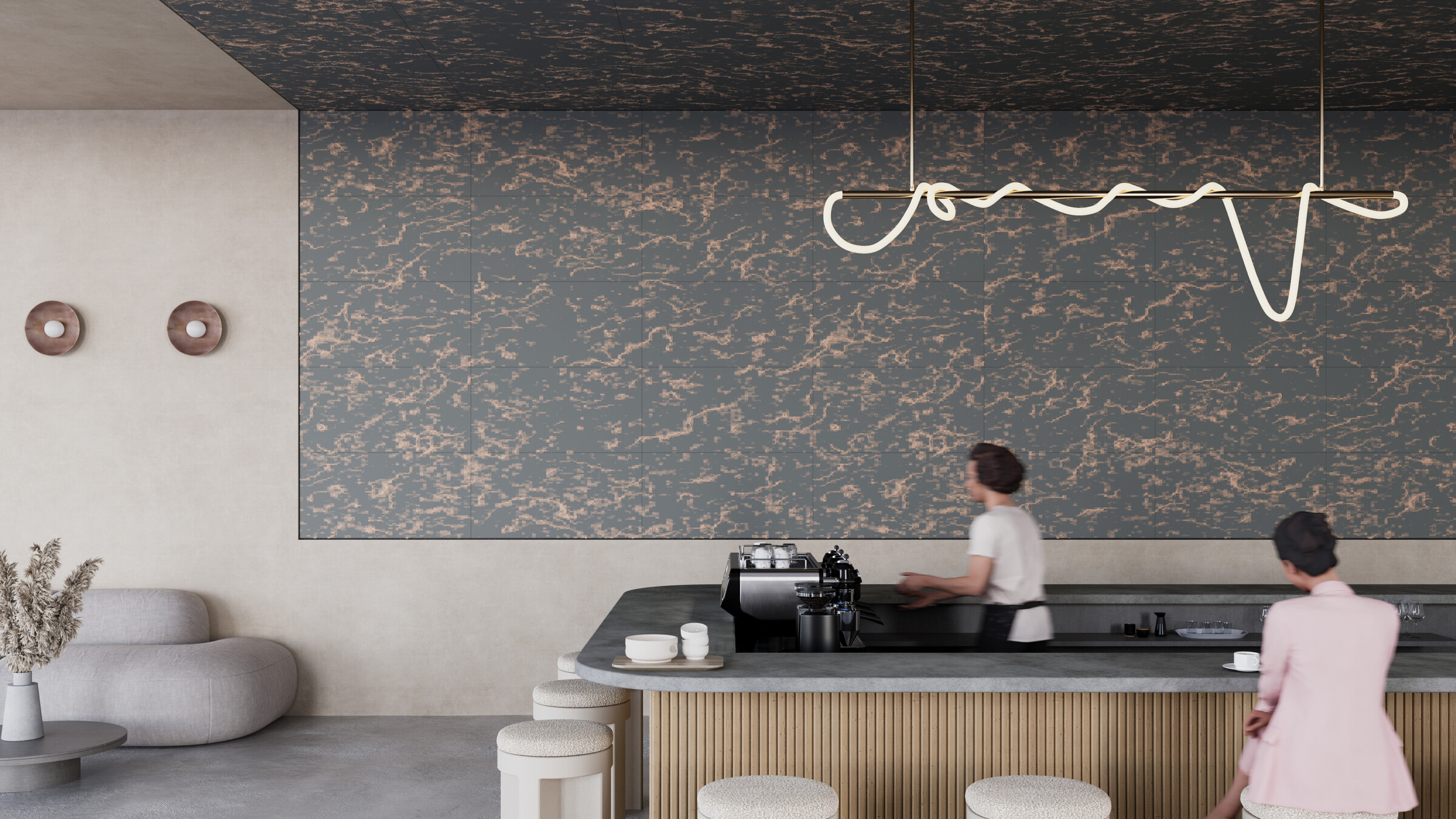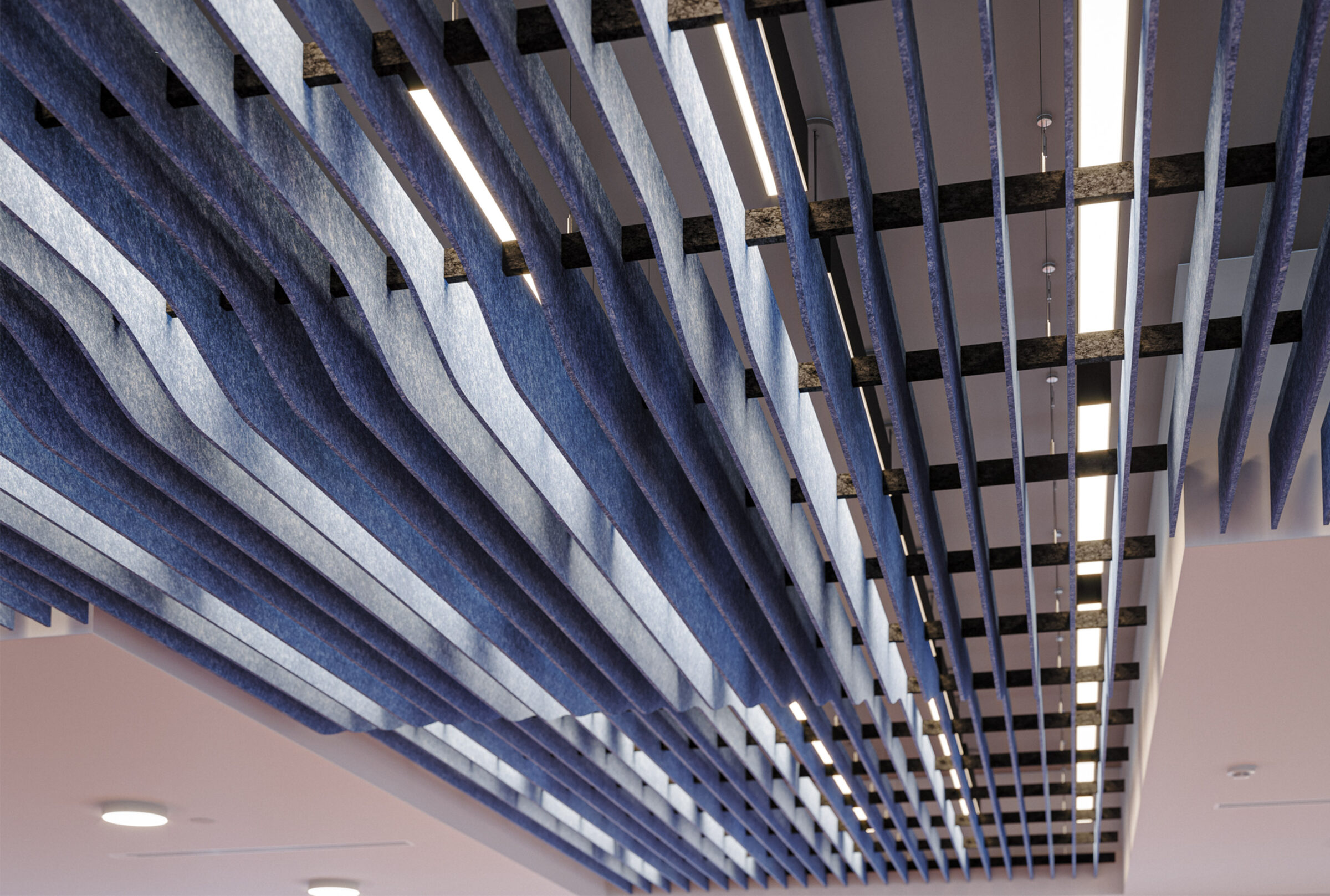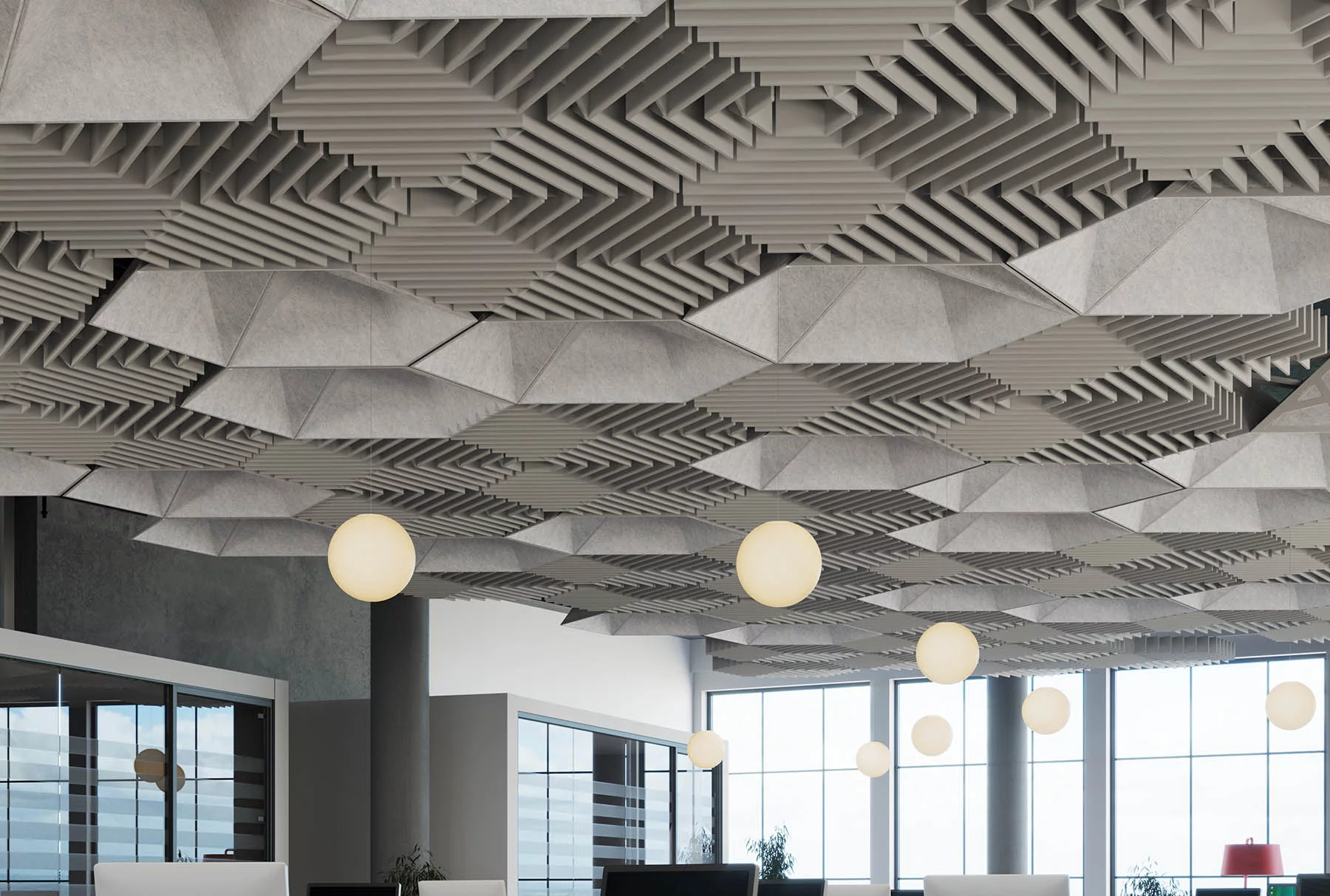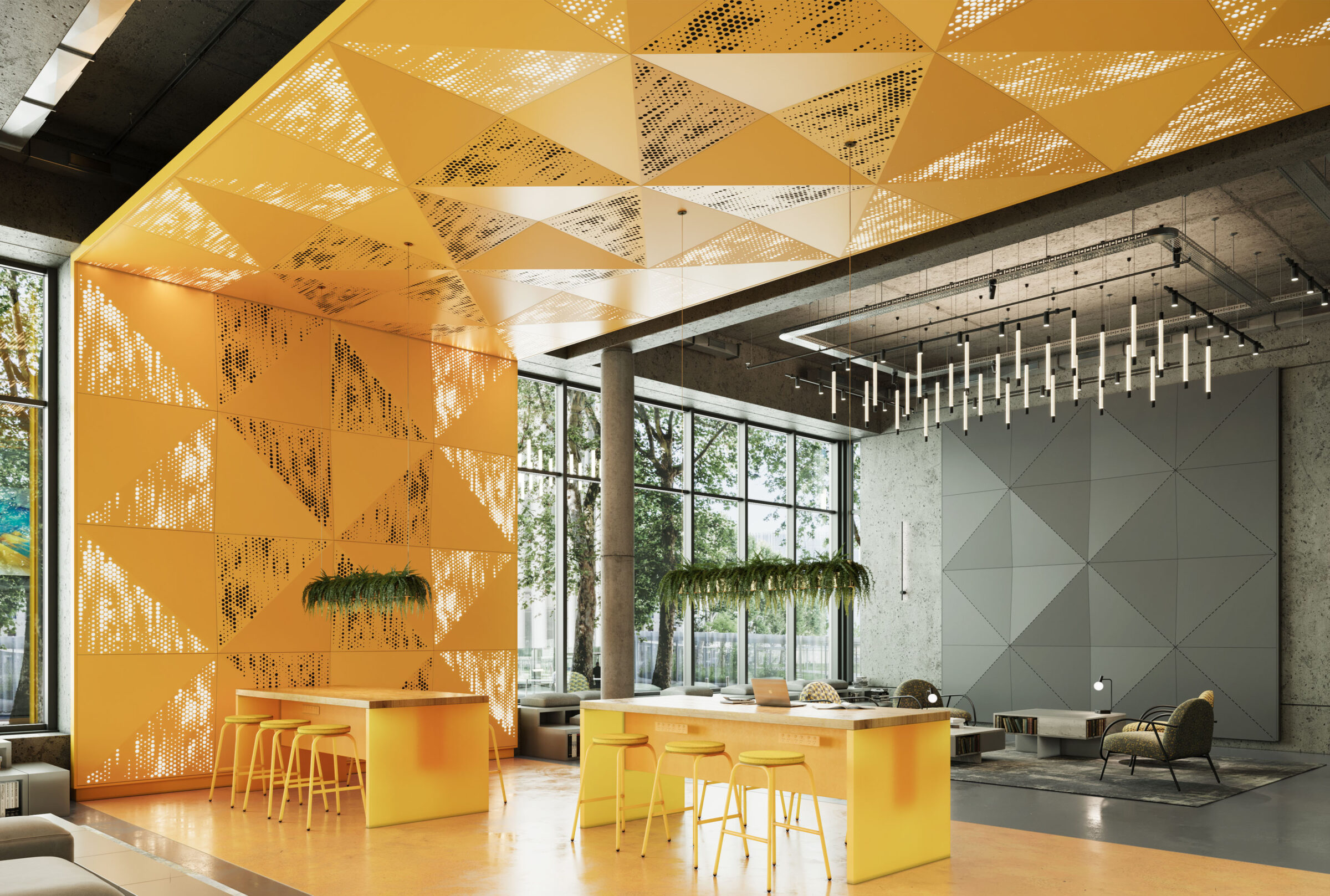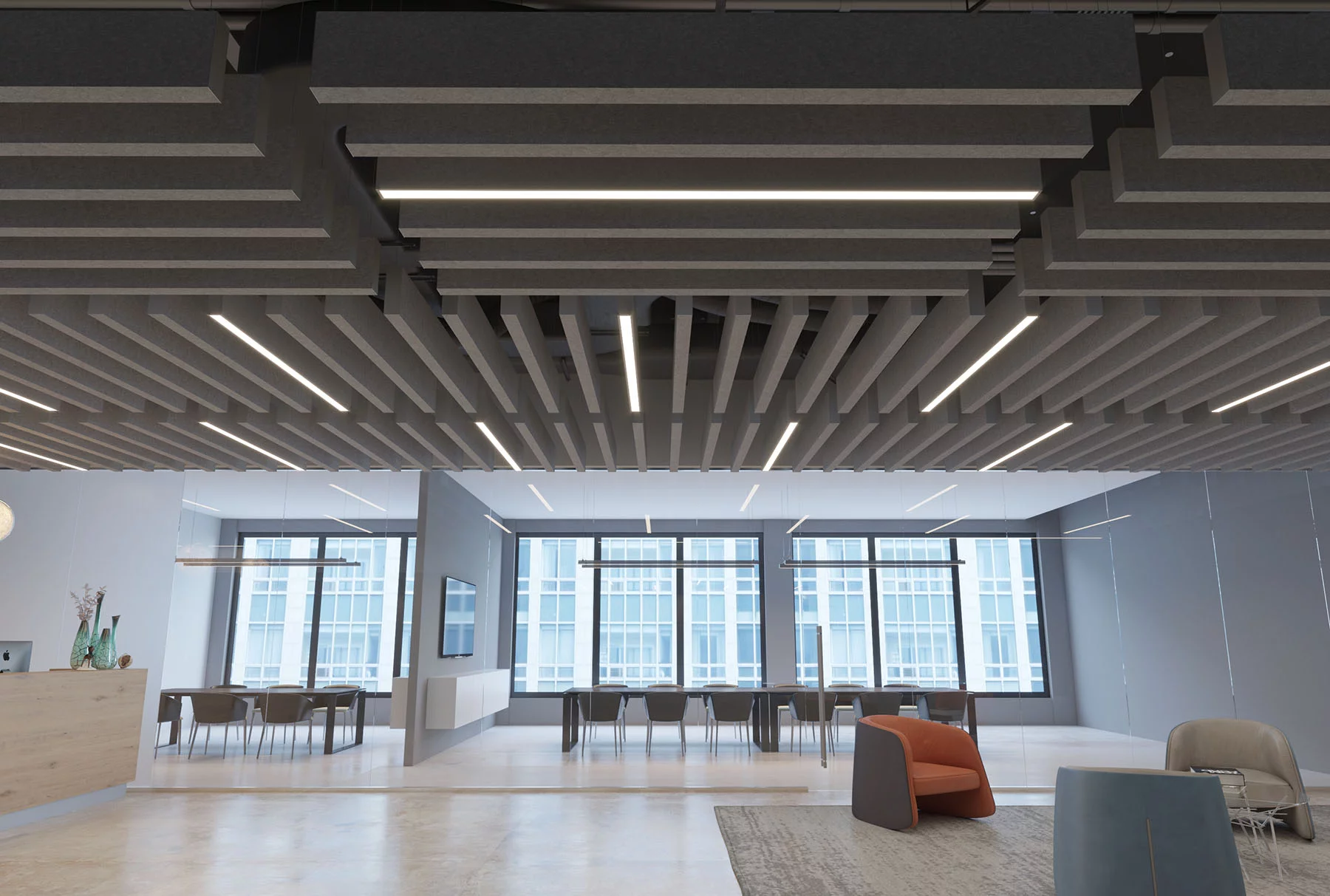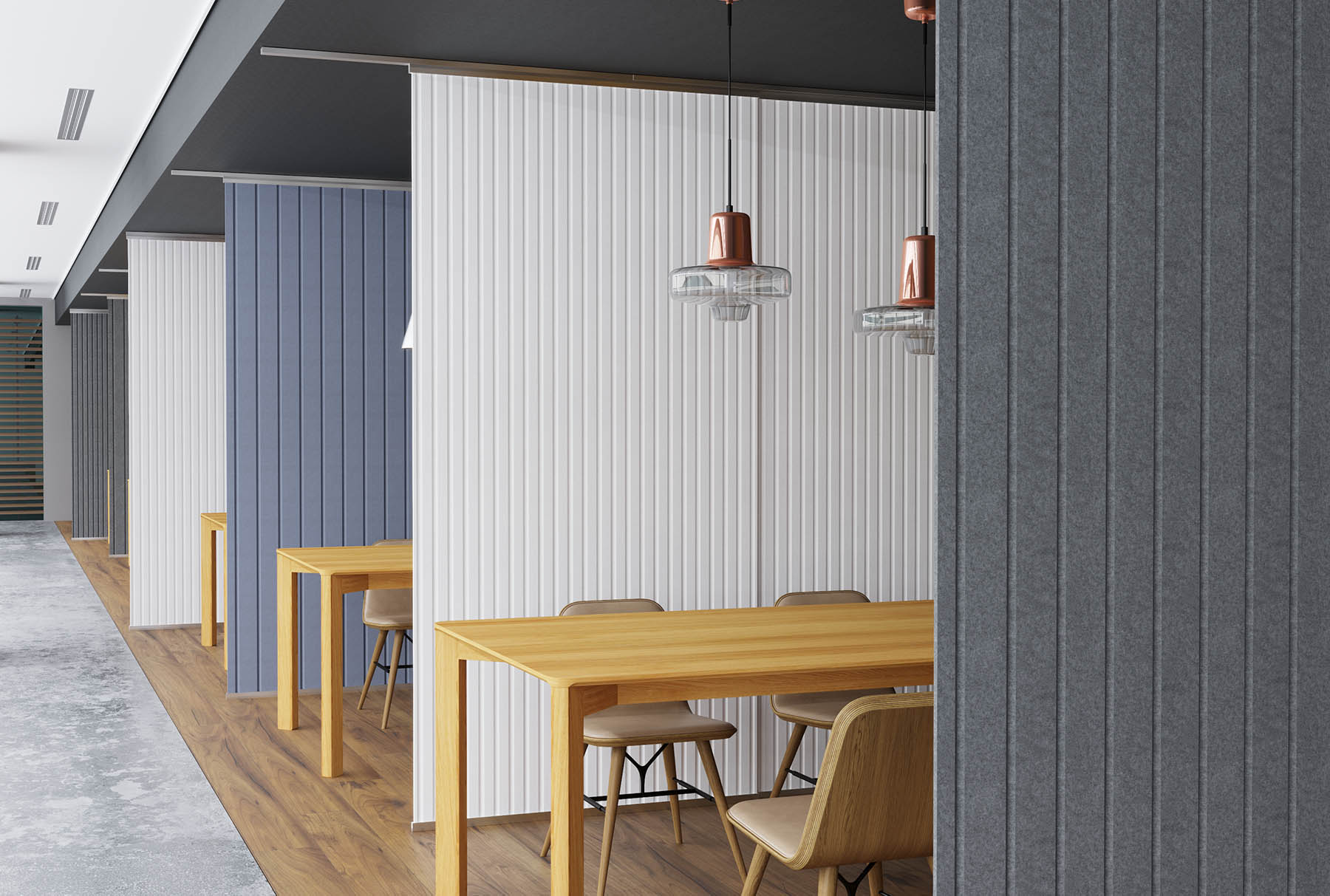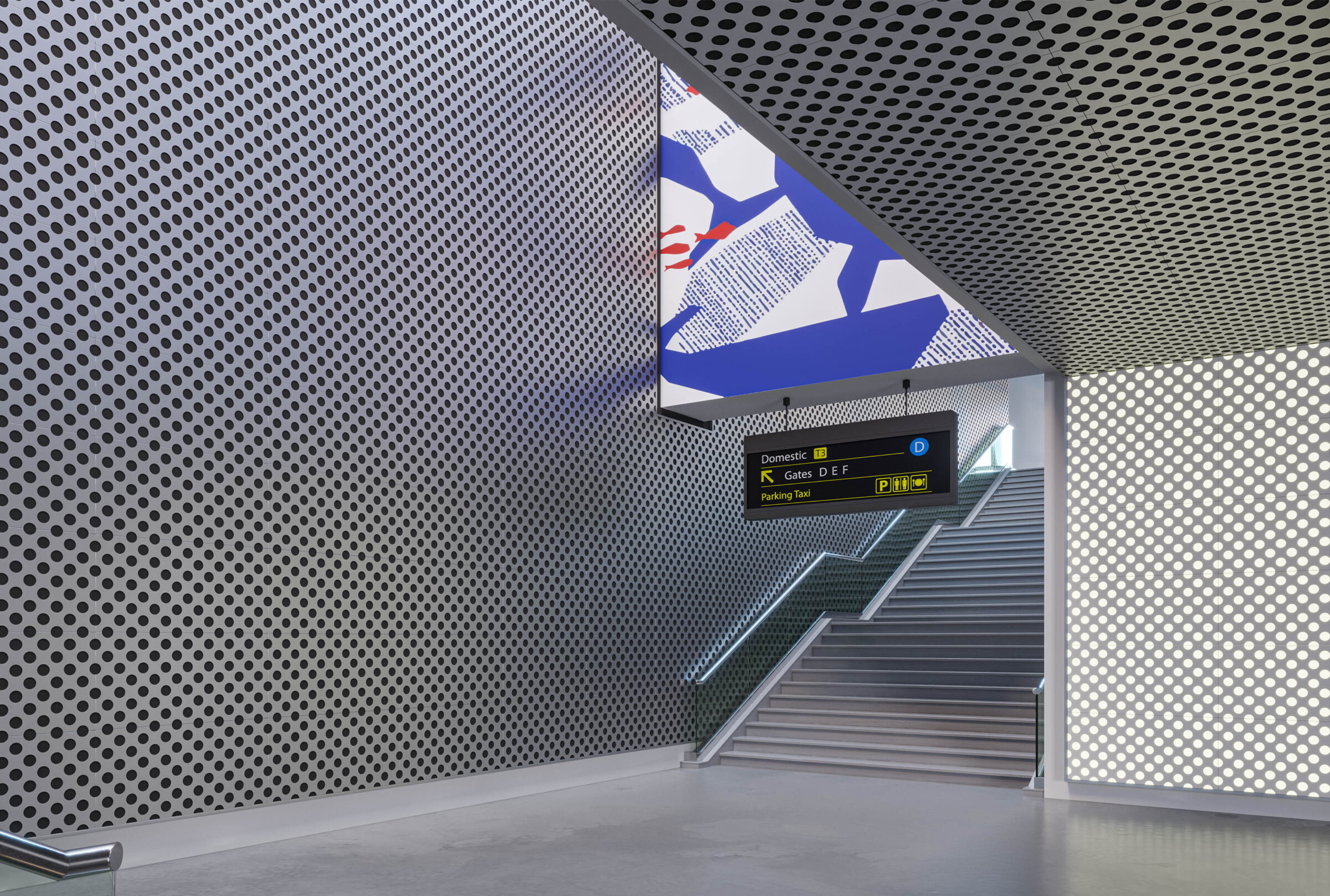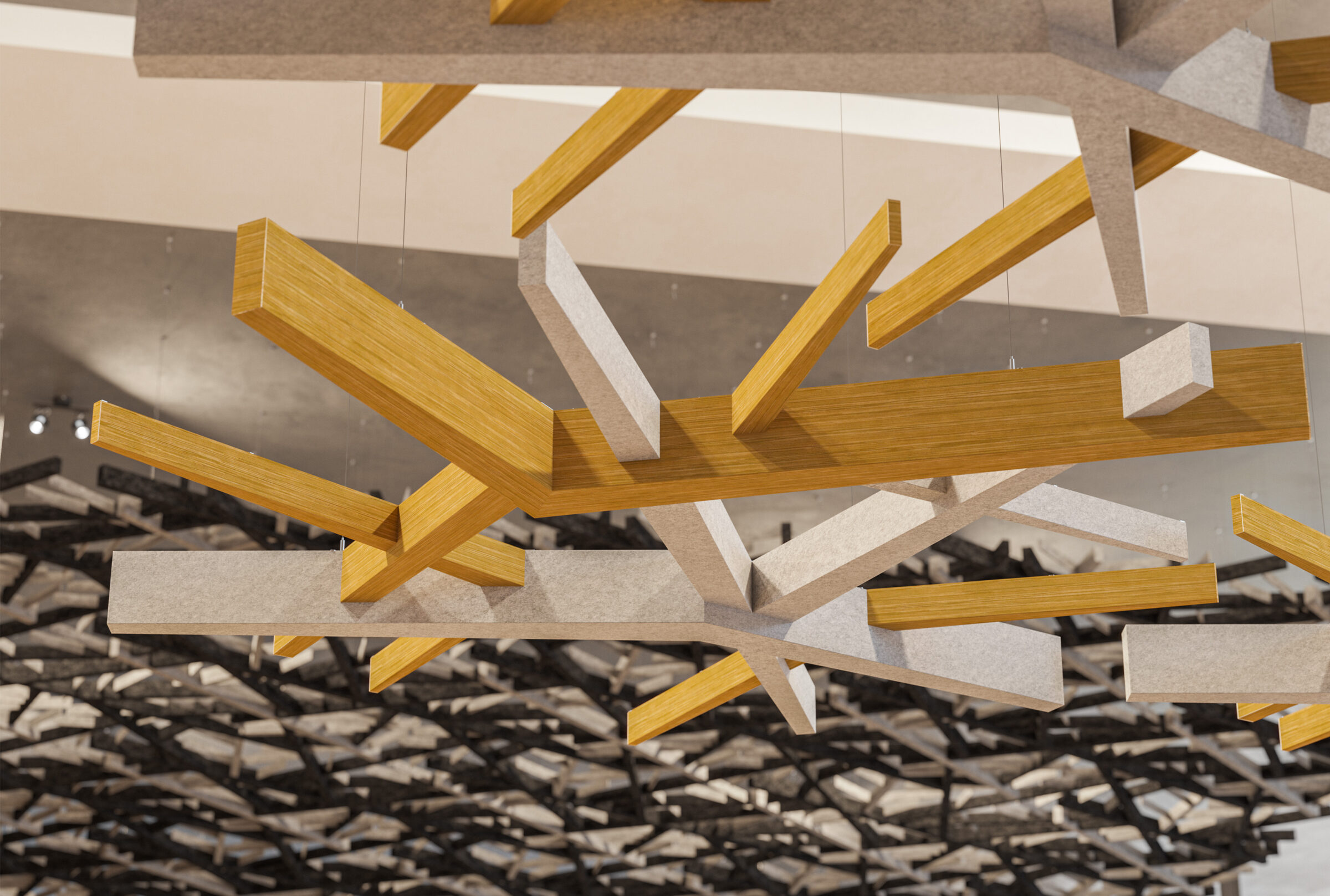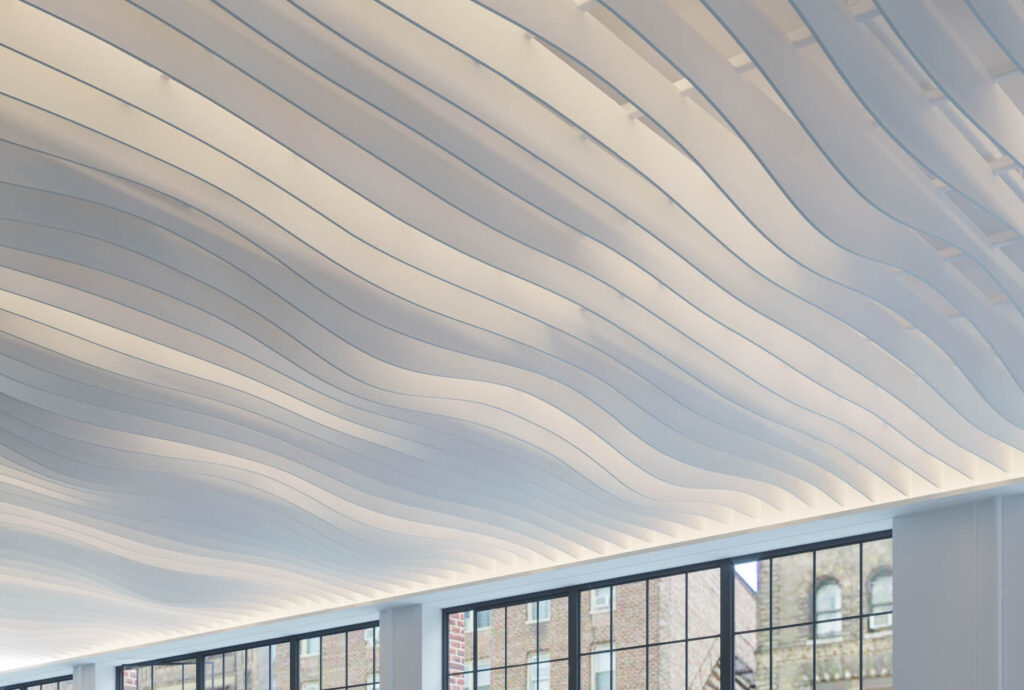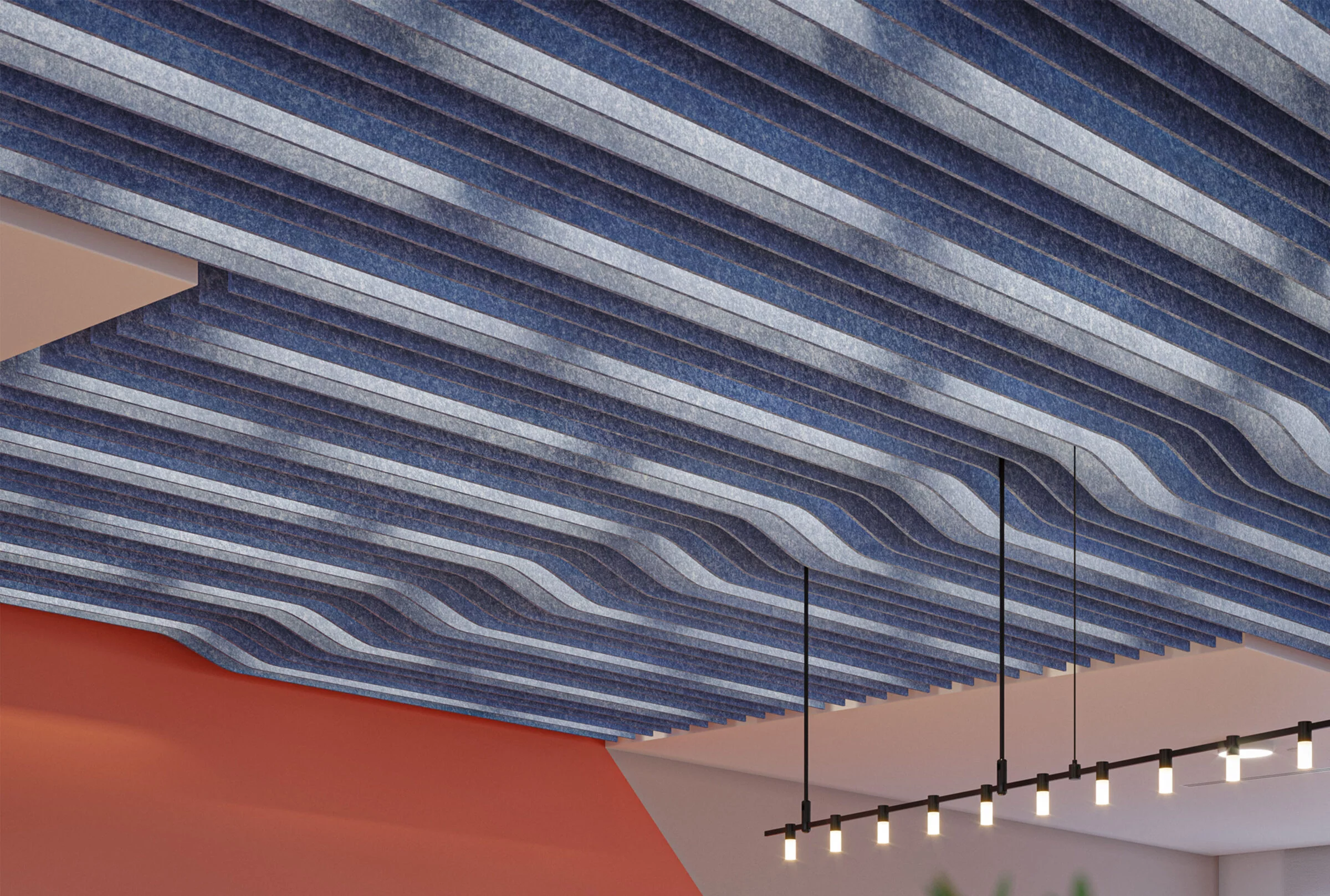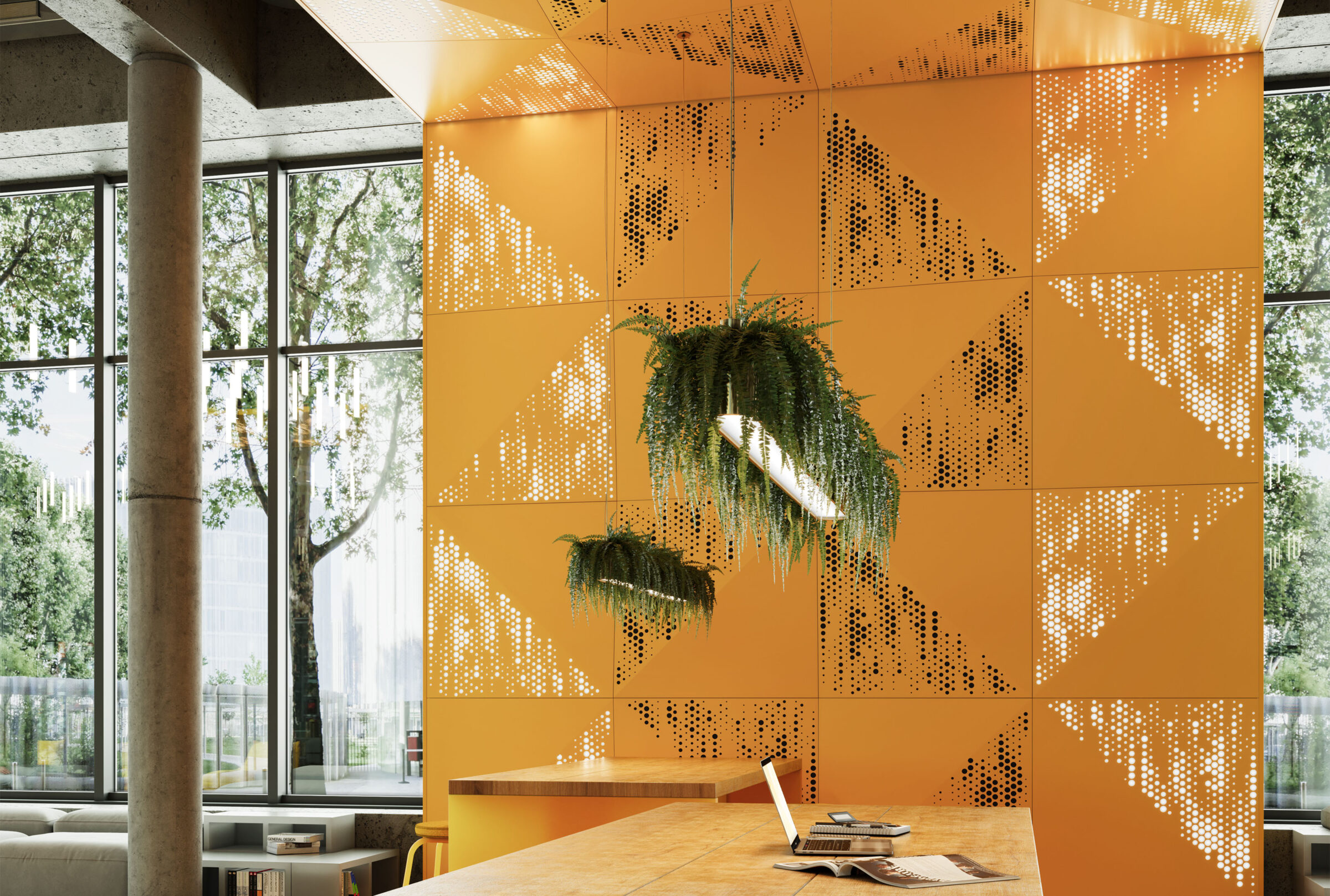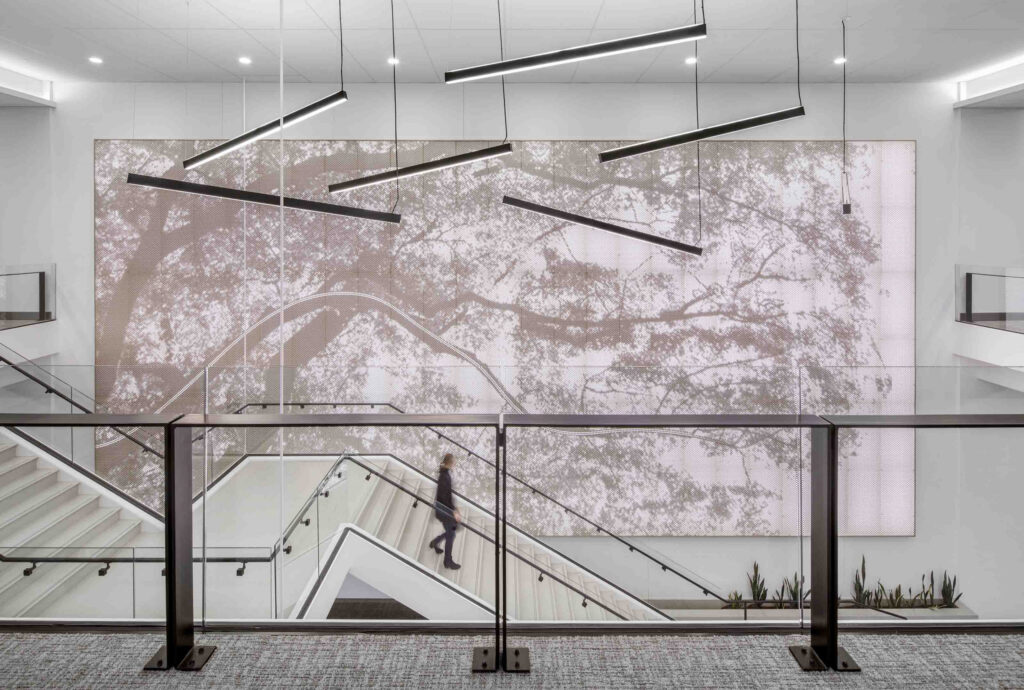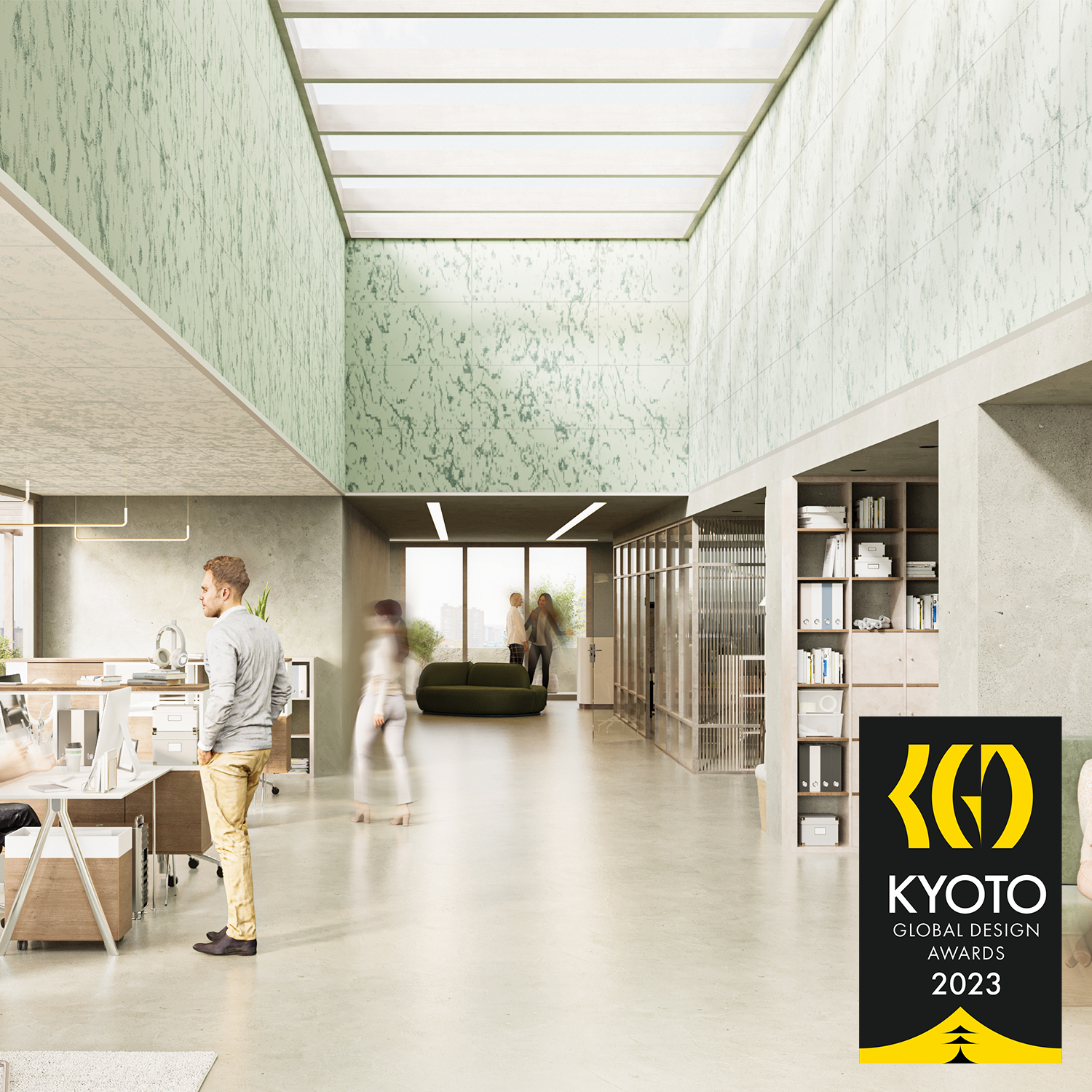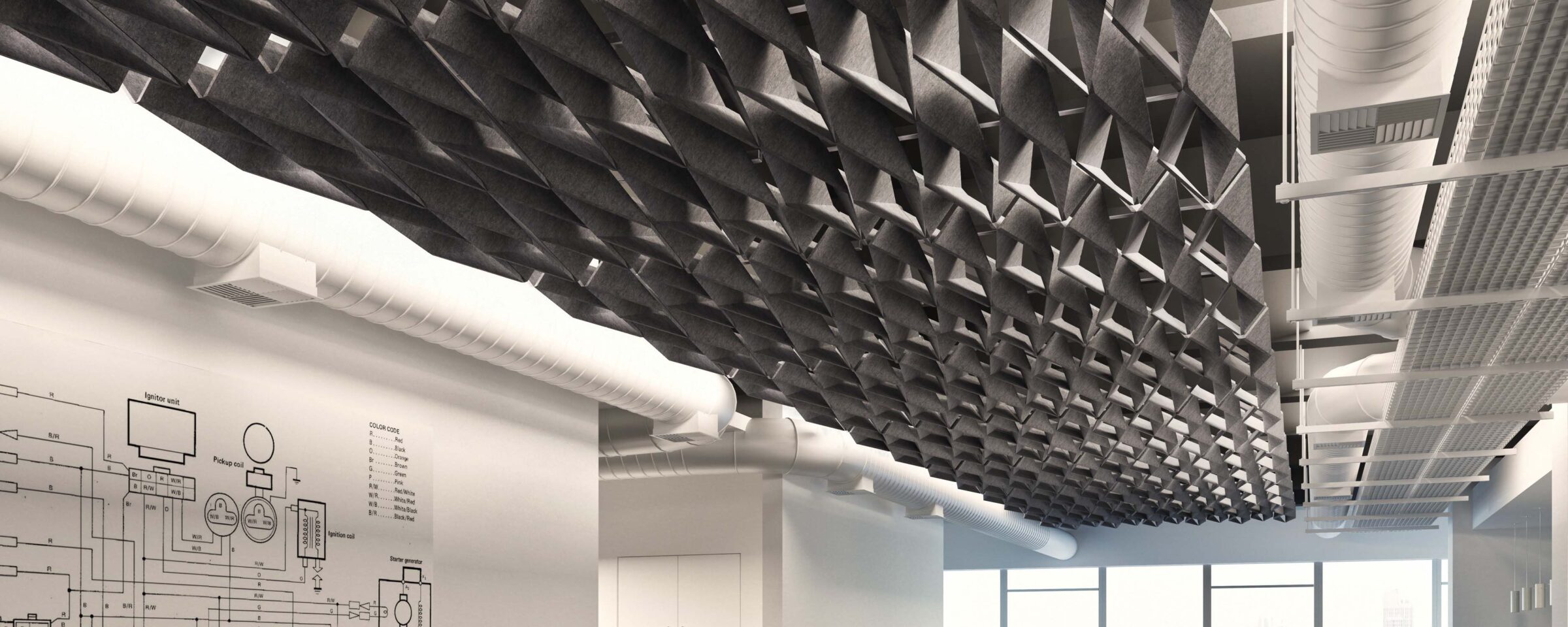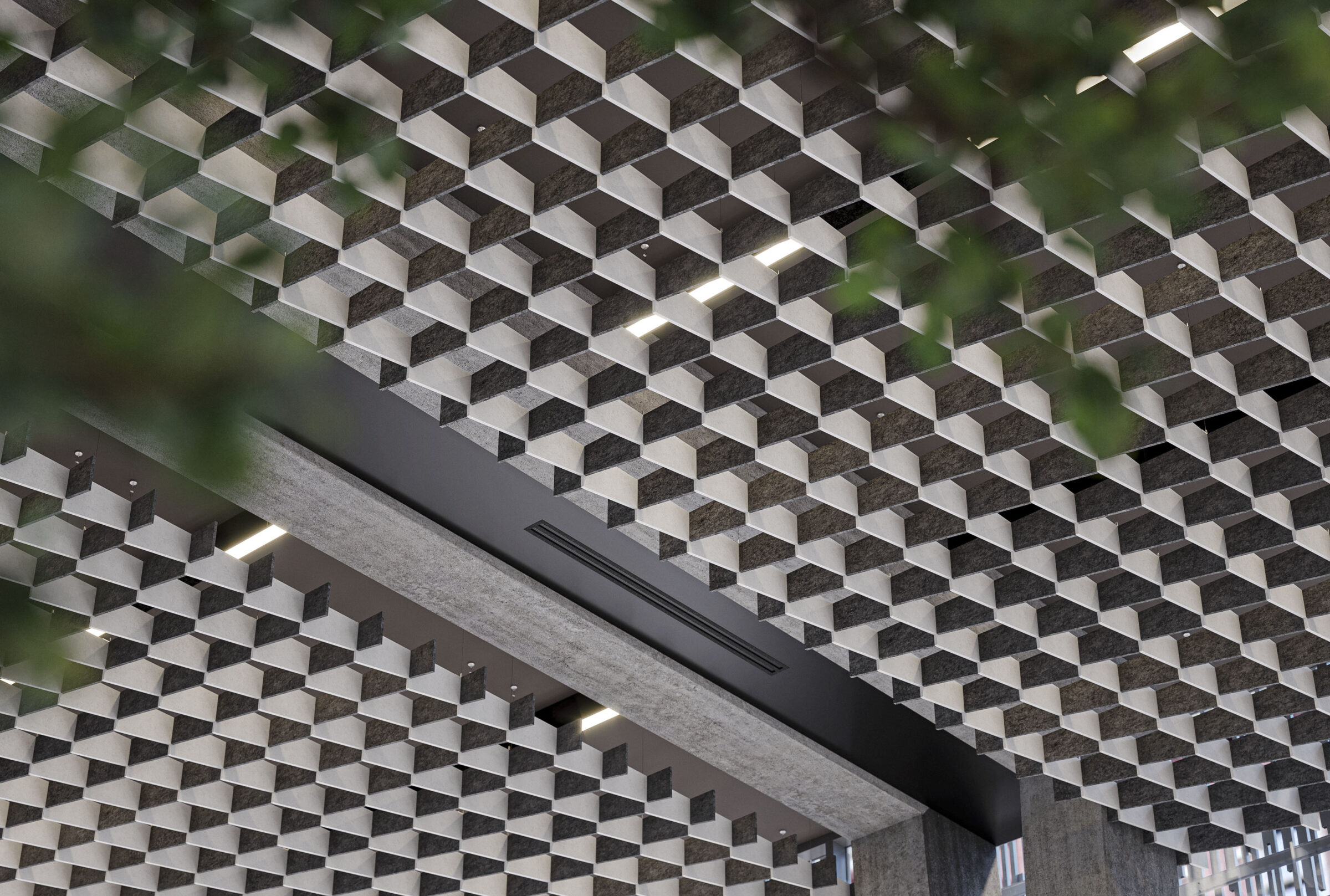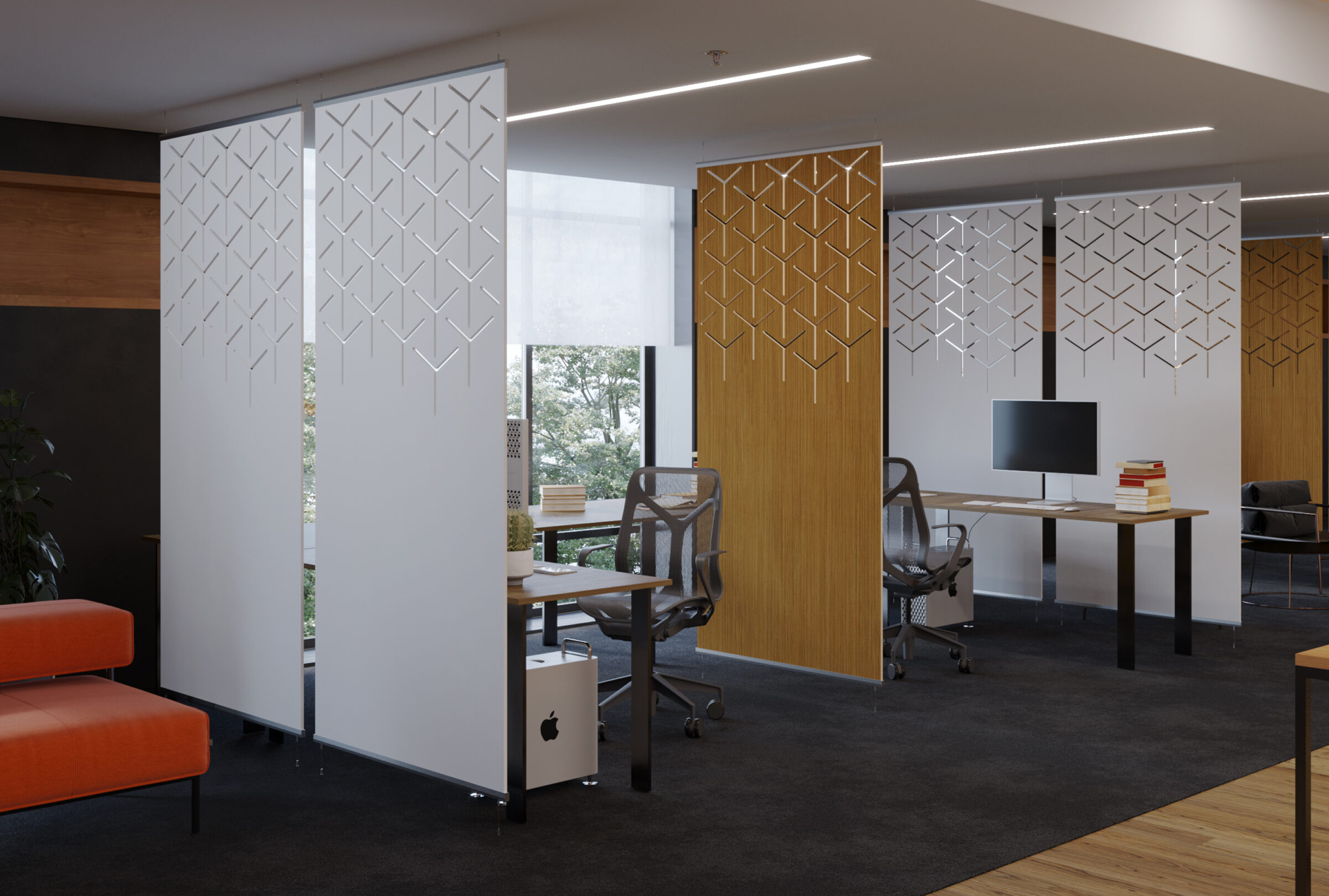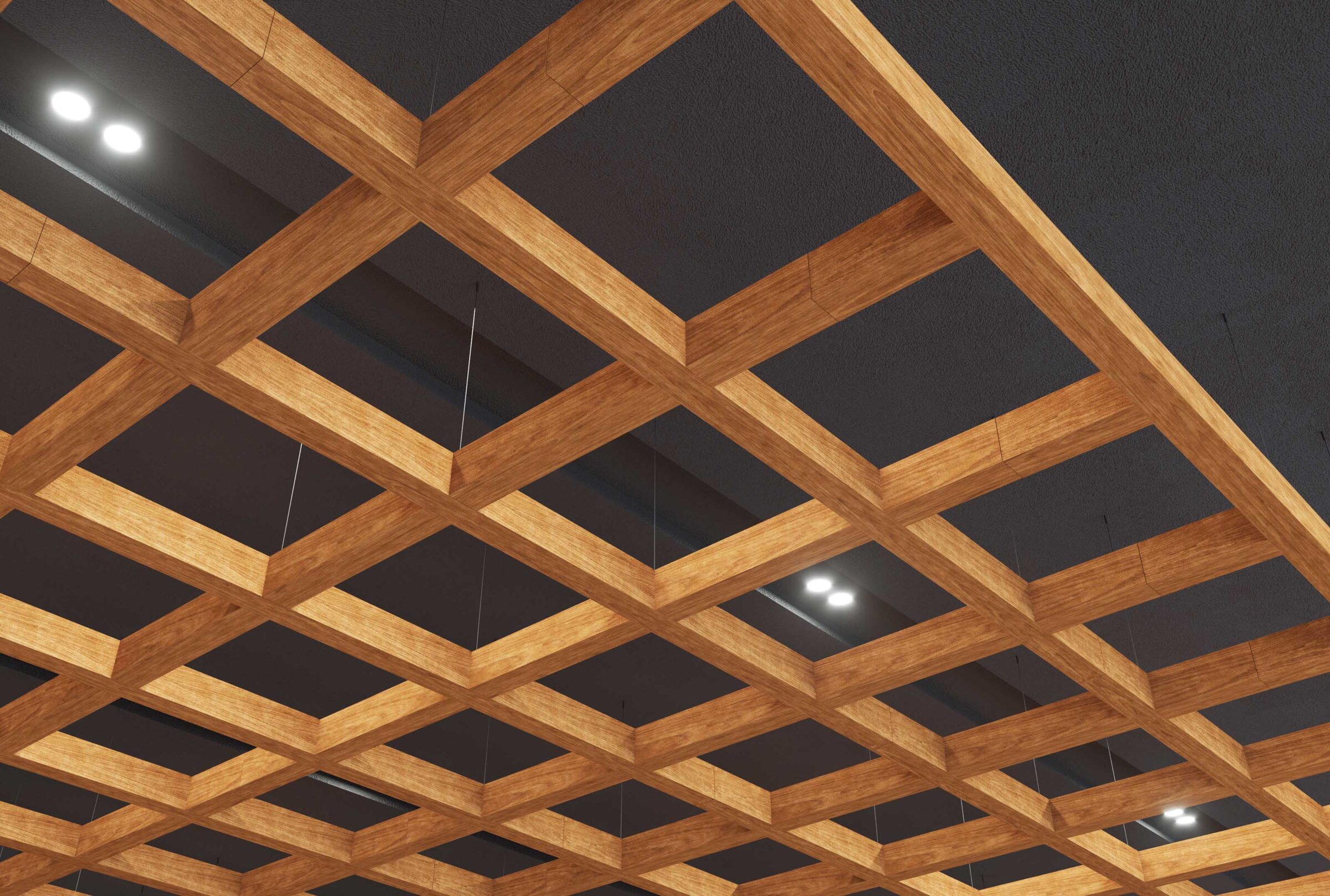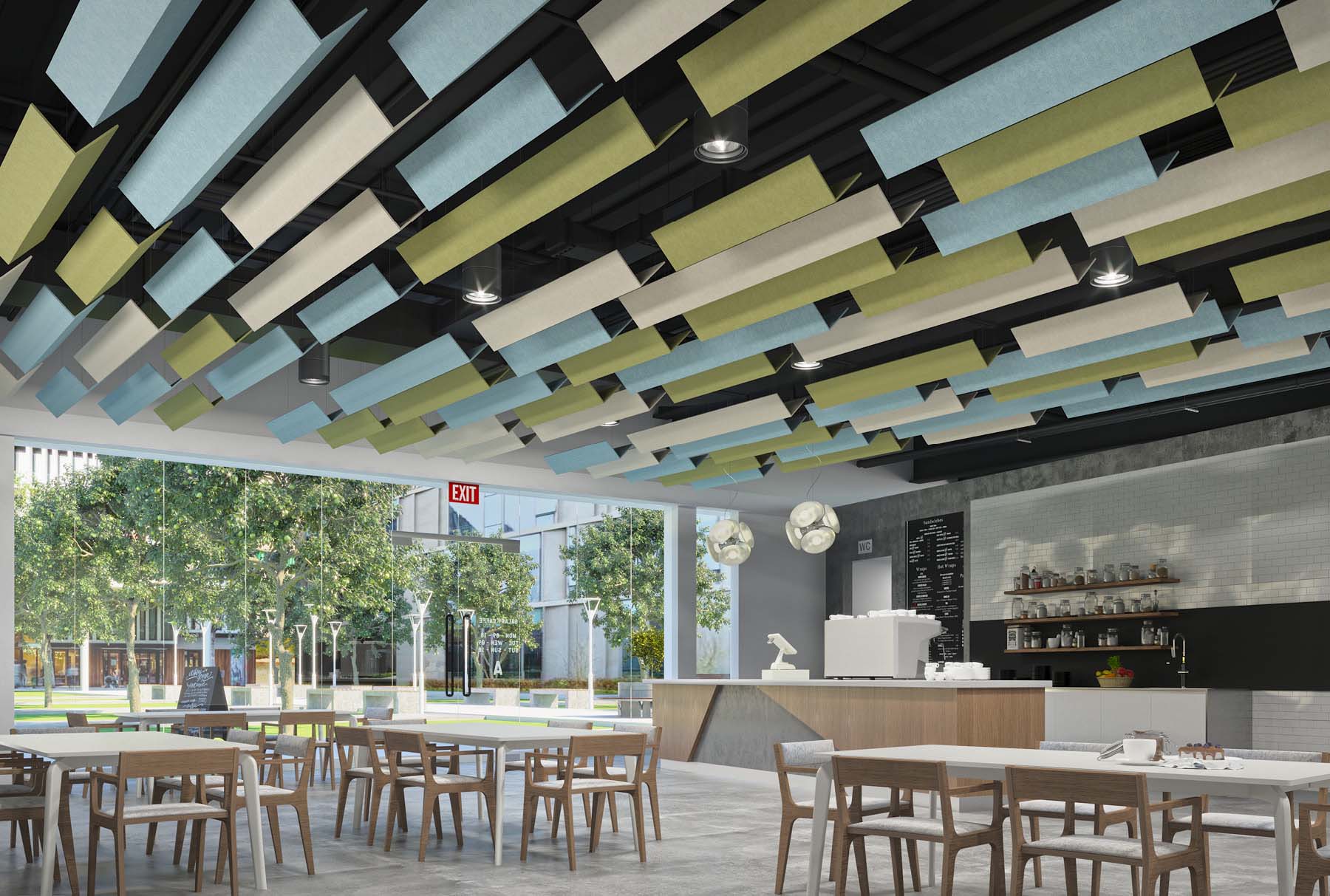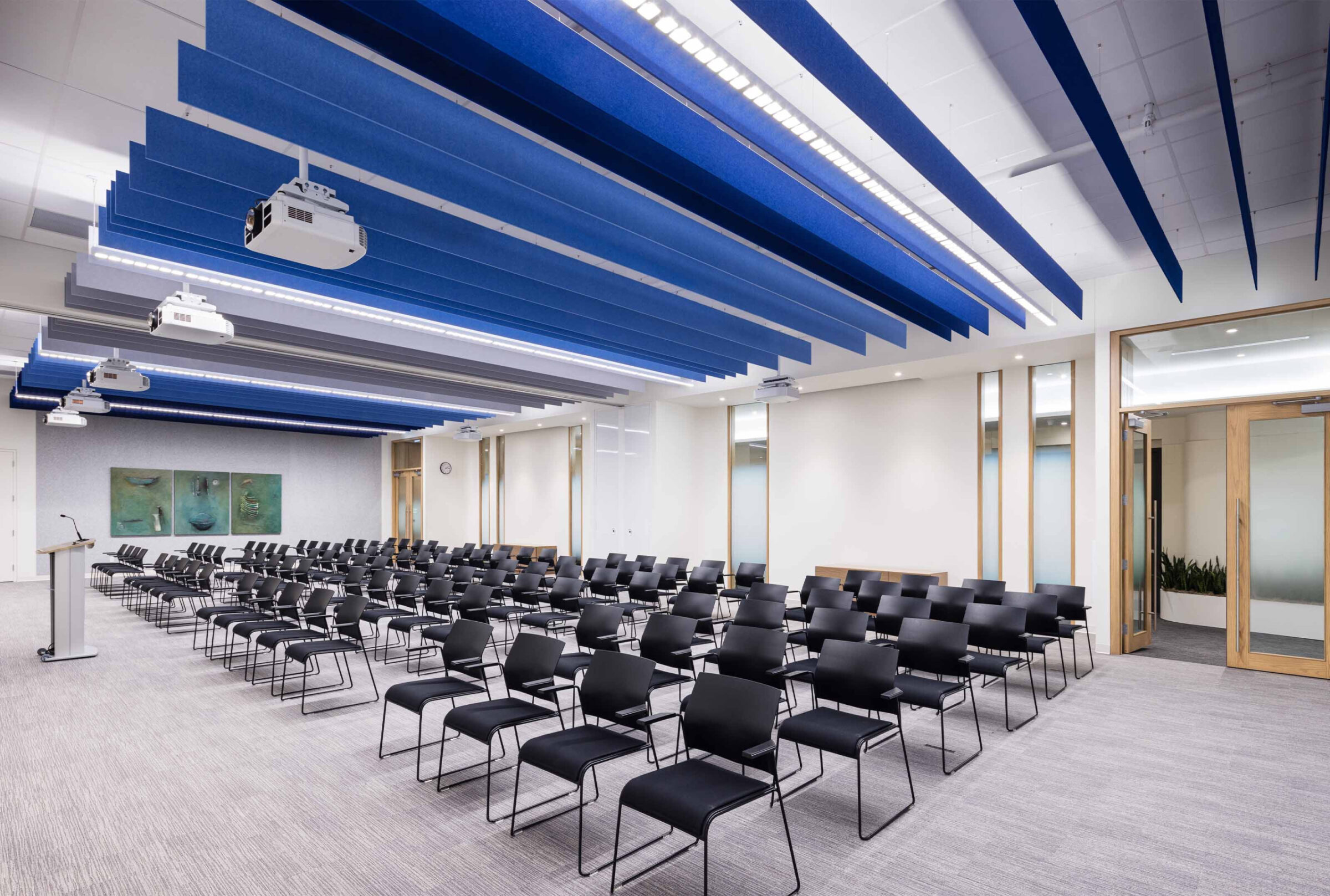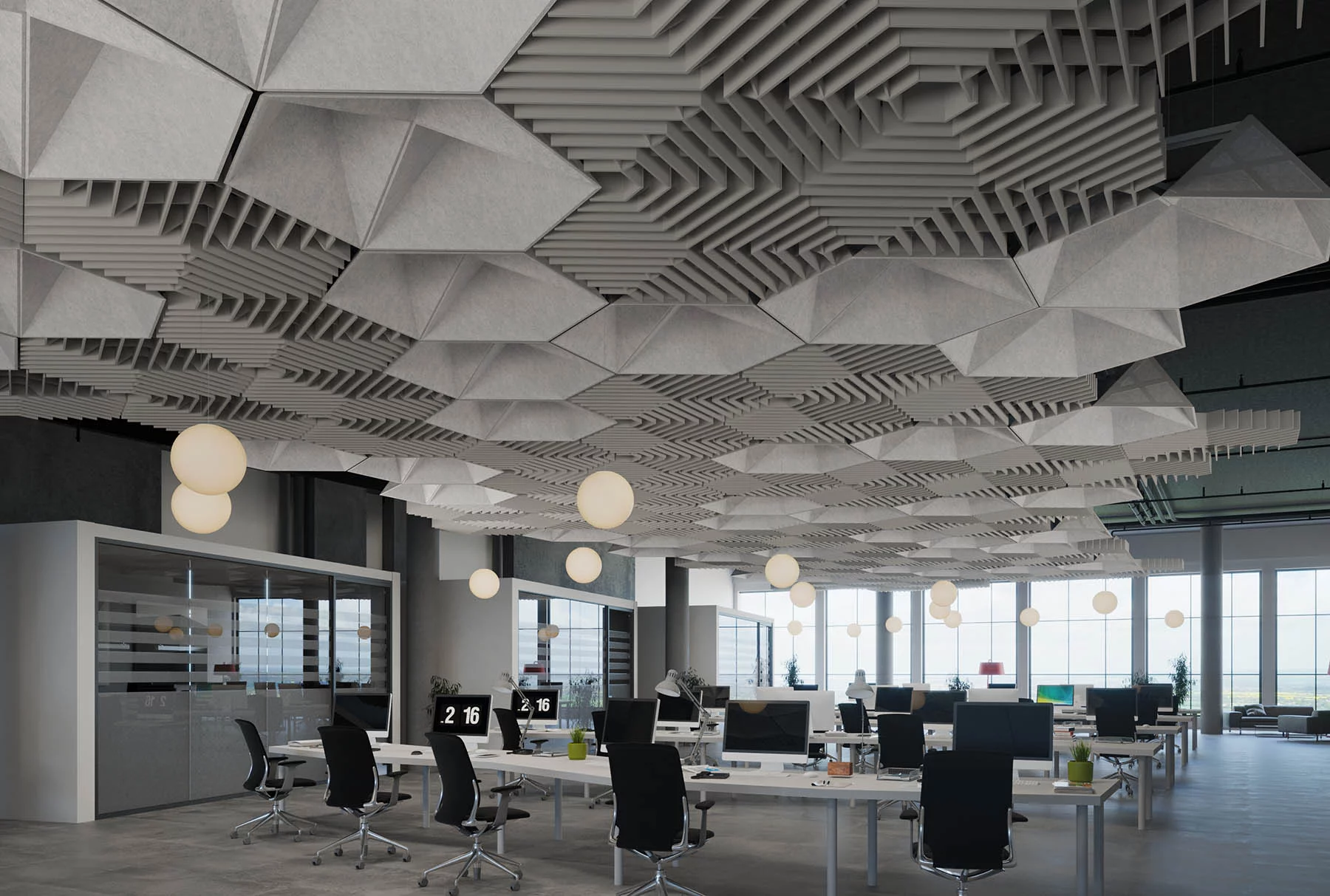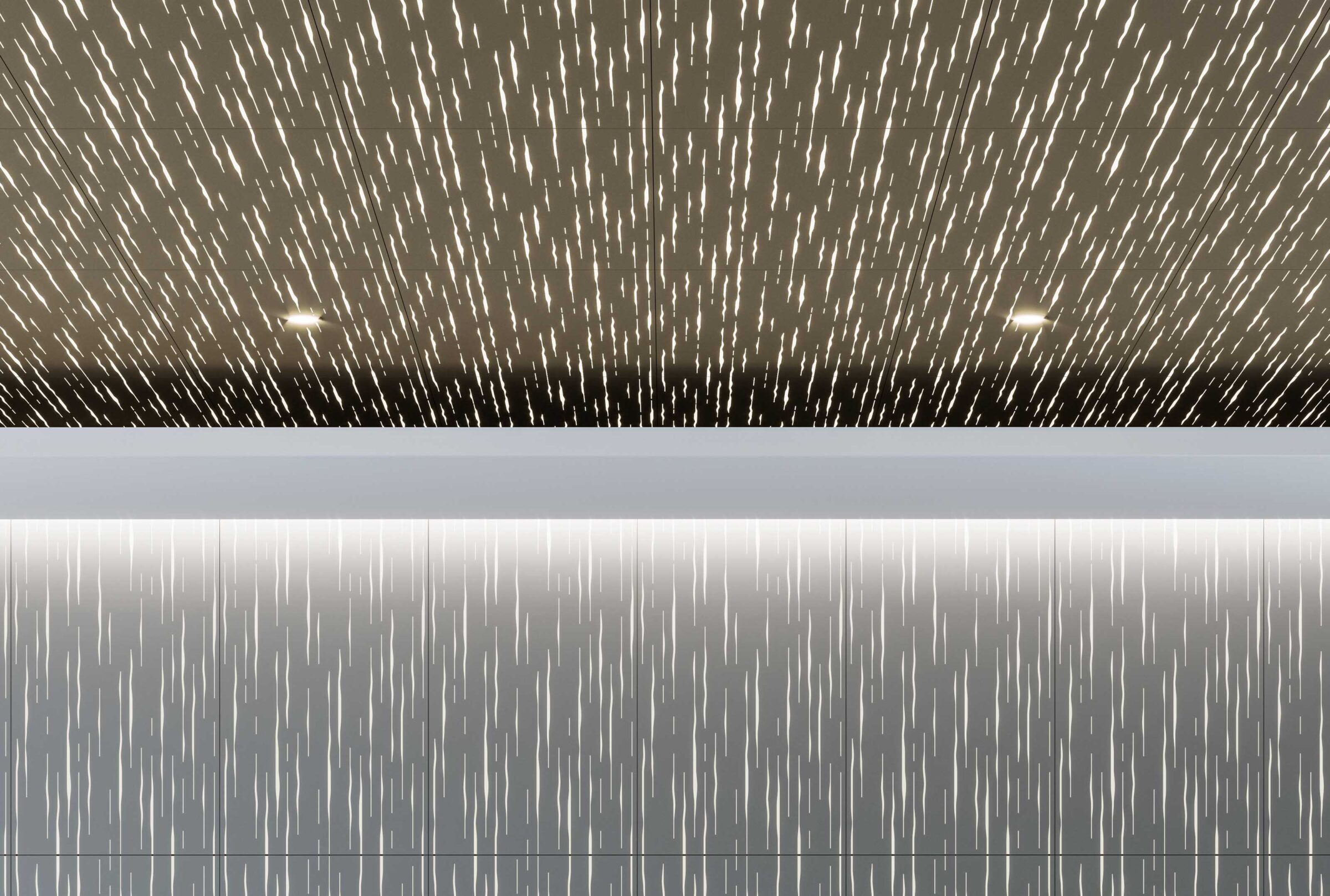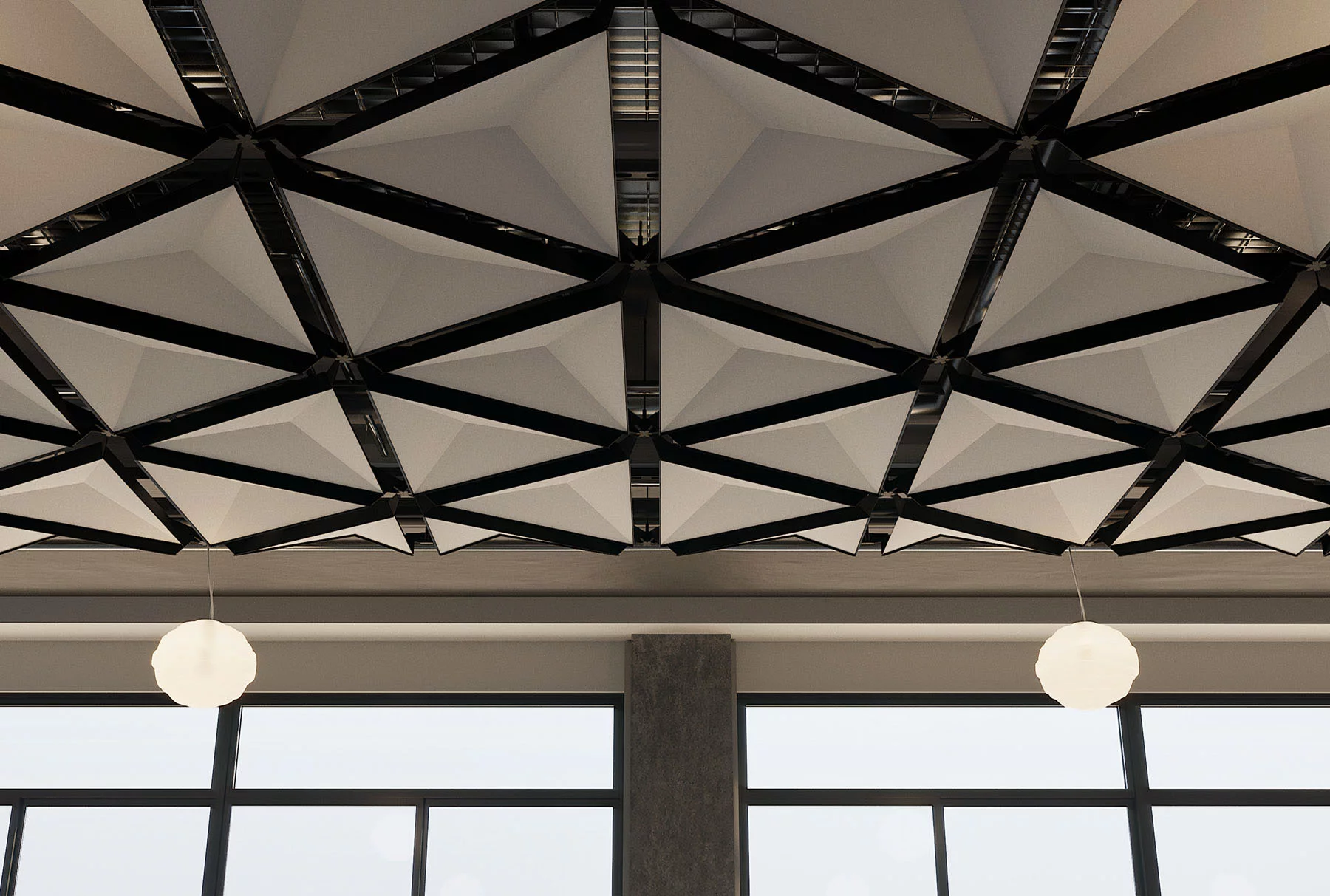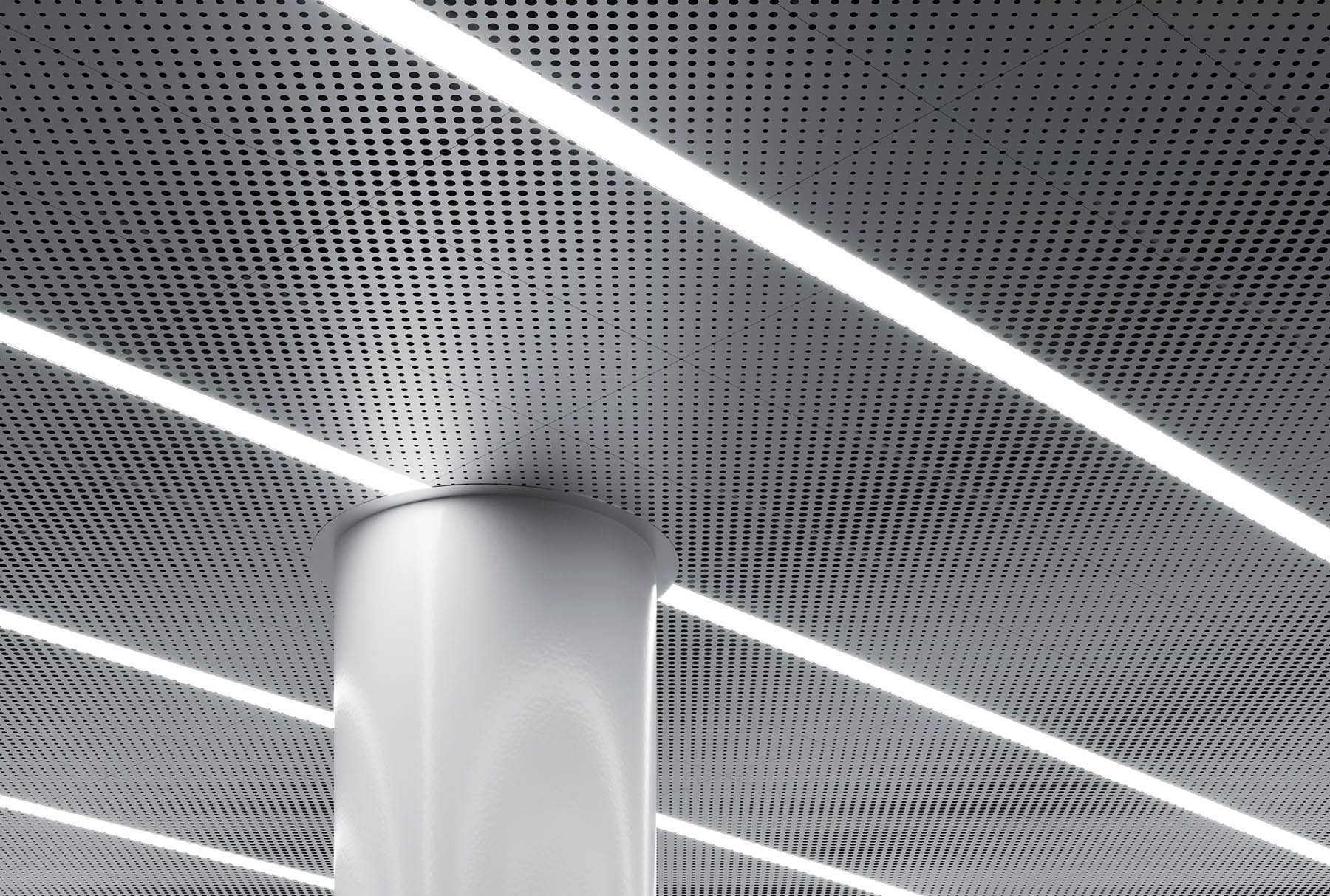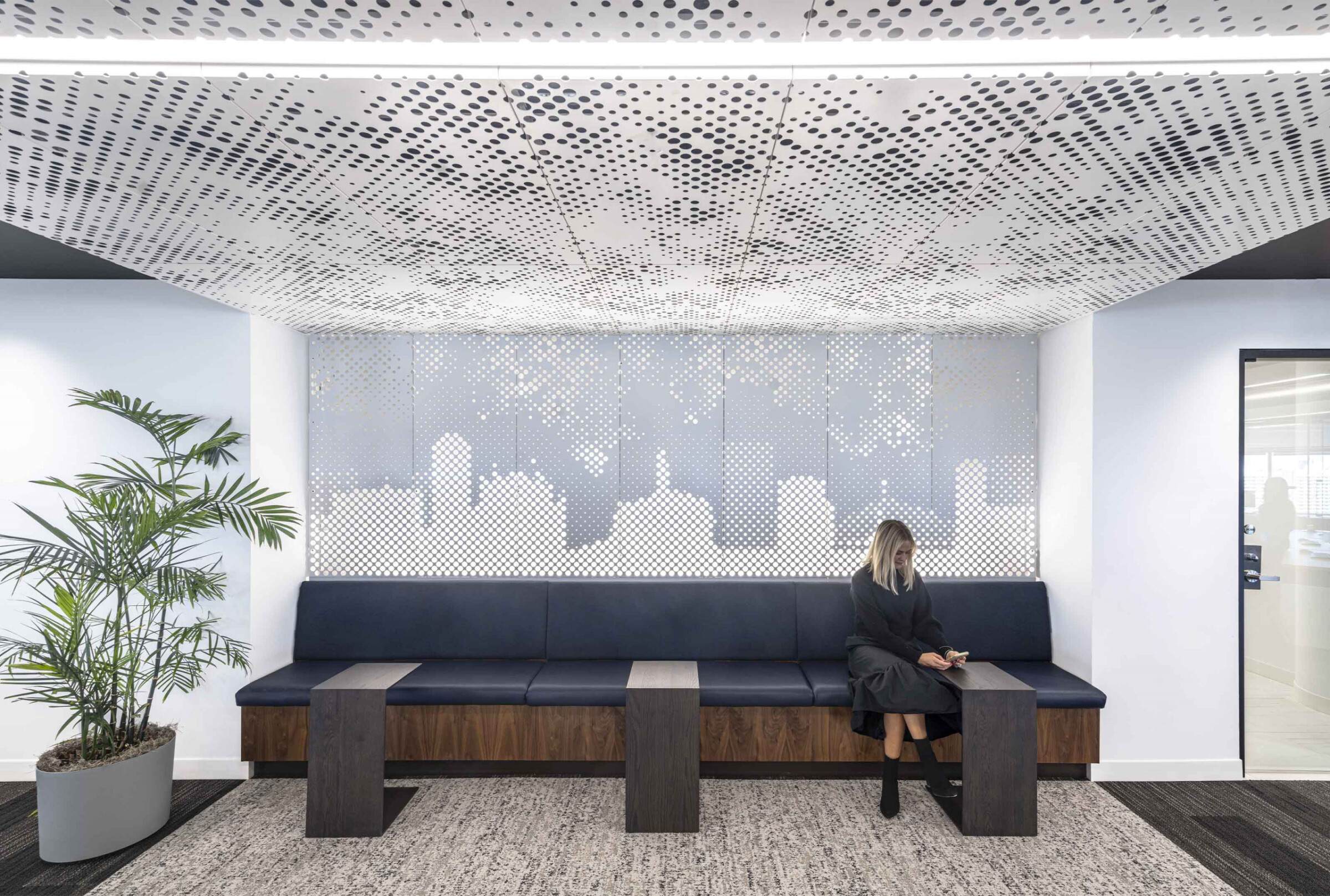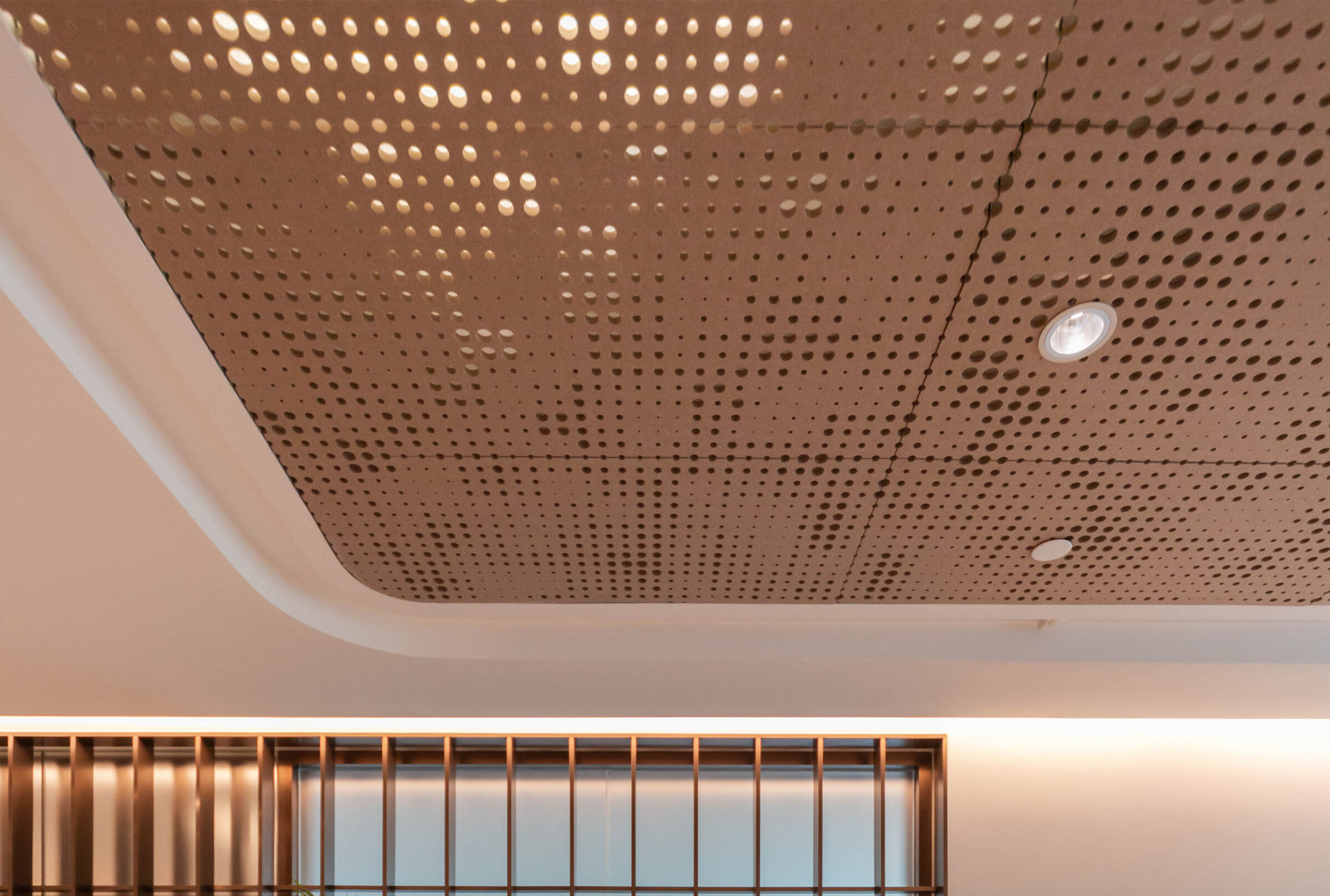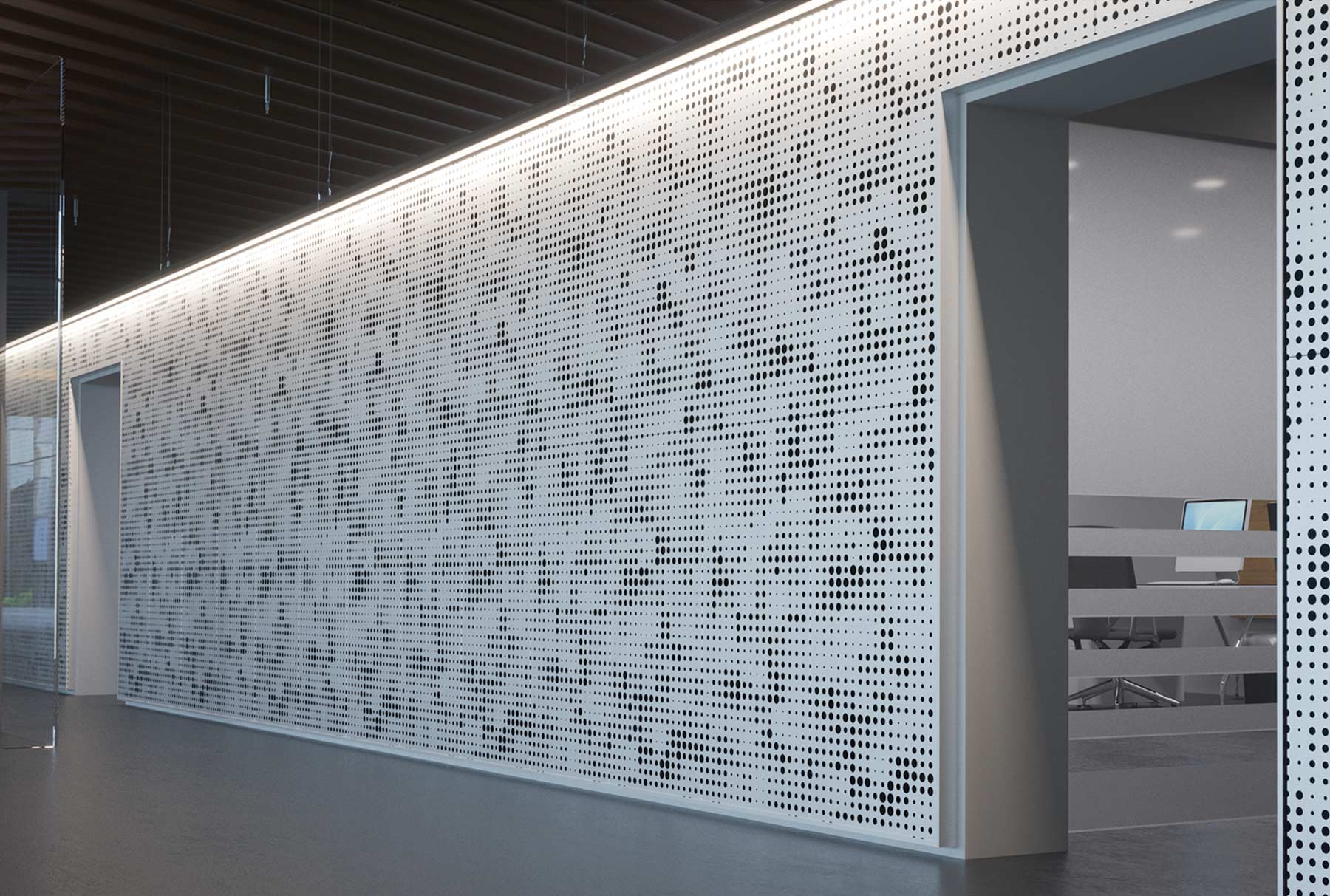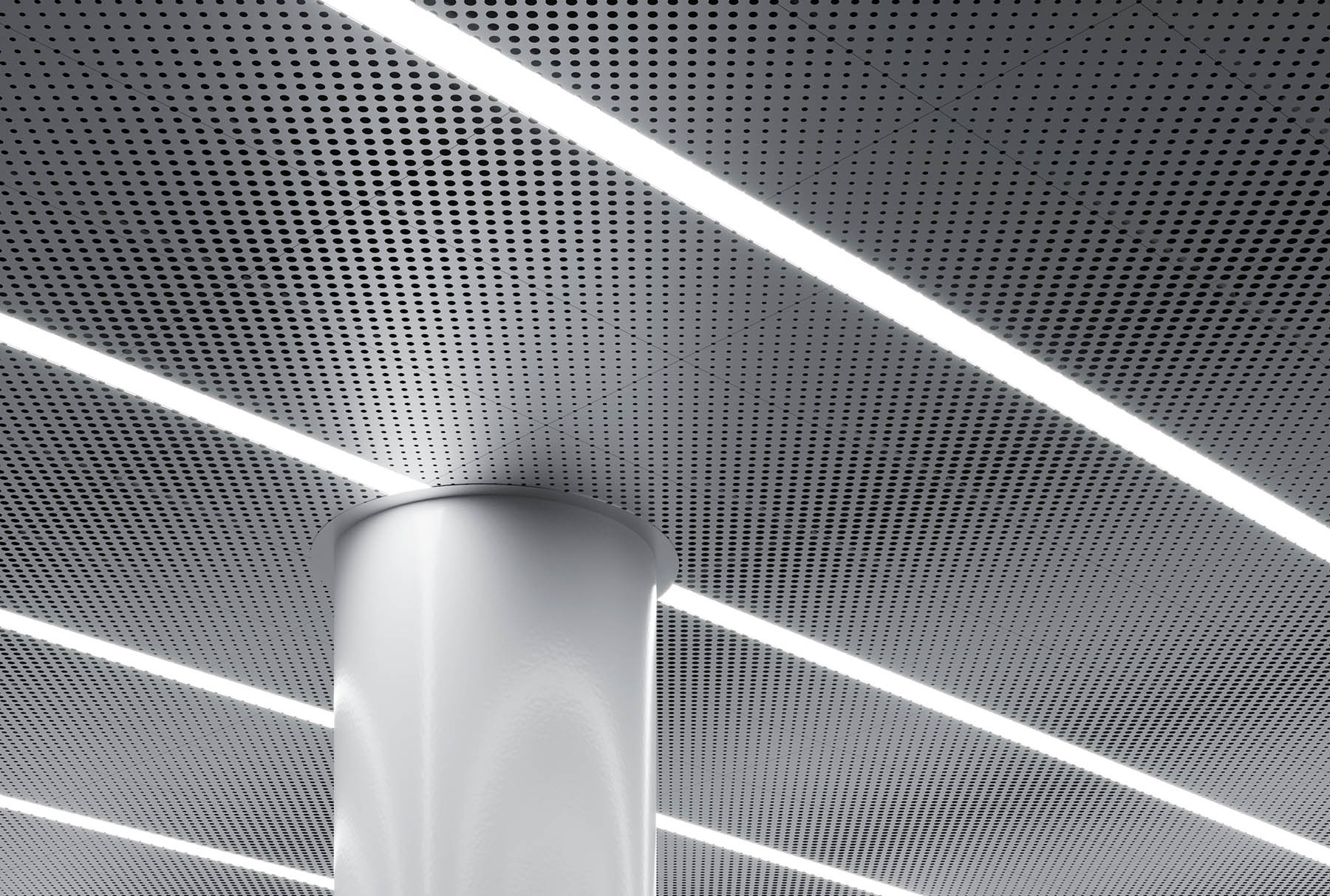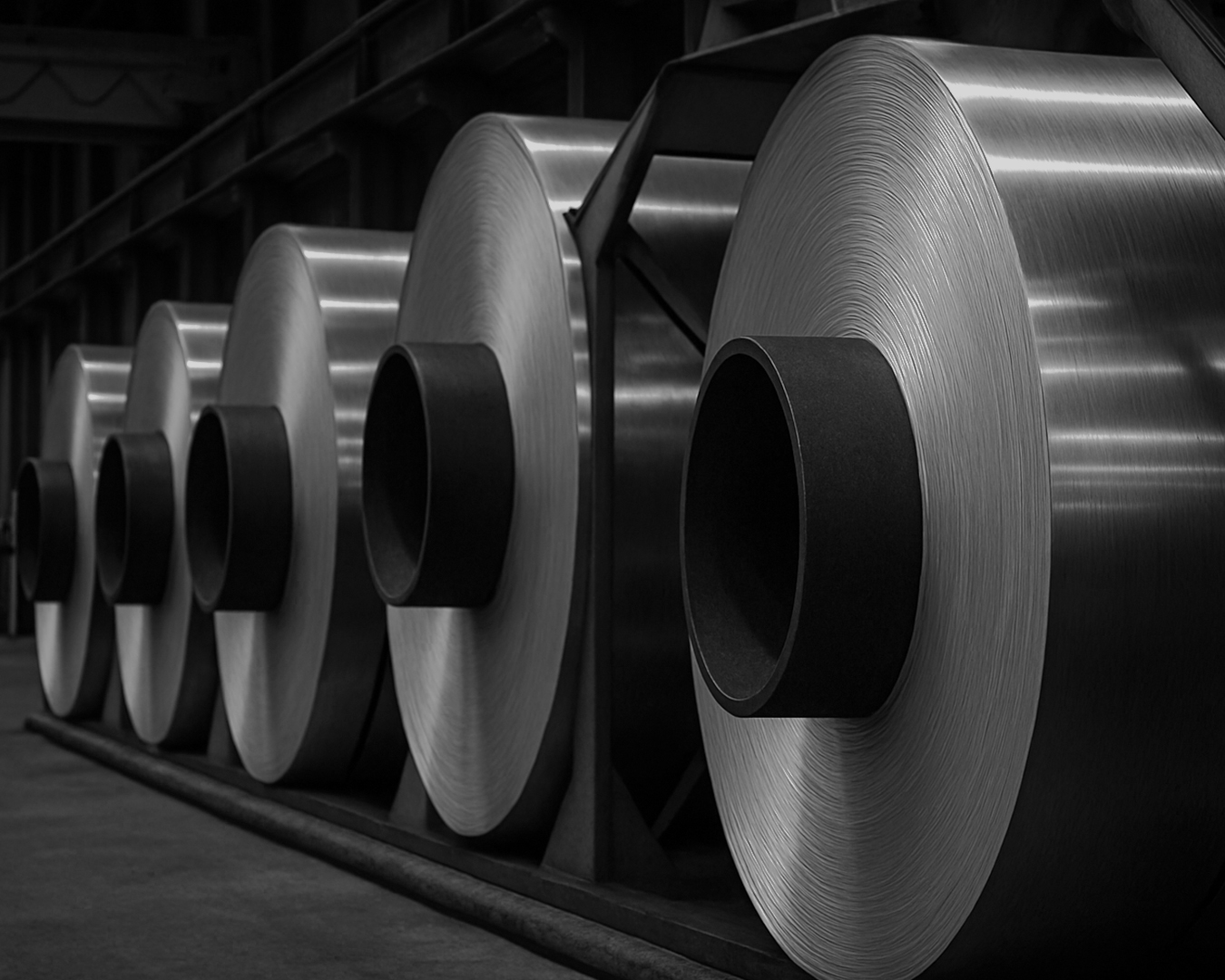
From Can to Ceiling
How post-consumer aluminium cans become an elevated ceiling system
Aluminium returns:
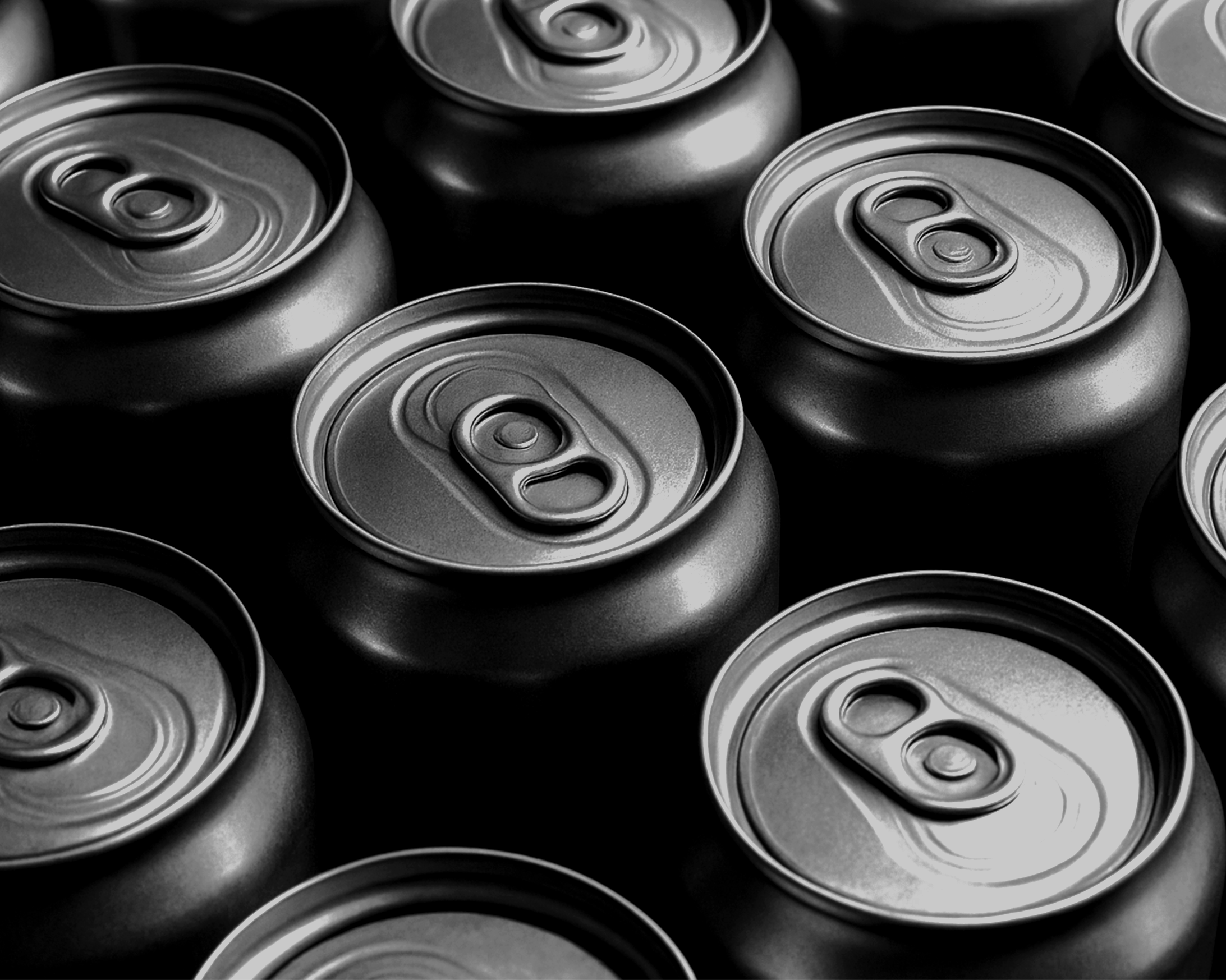
Step 1: Collection & Sorting
Post-consumer and industrial aluminium is collected and separated from mixed materials using eddy current separators,
optical scanners, and magnetic filters. Aluminium is non-ferrous (not magnetic), so it’s sorted by
conductivity and reflectivity.
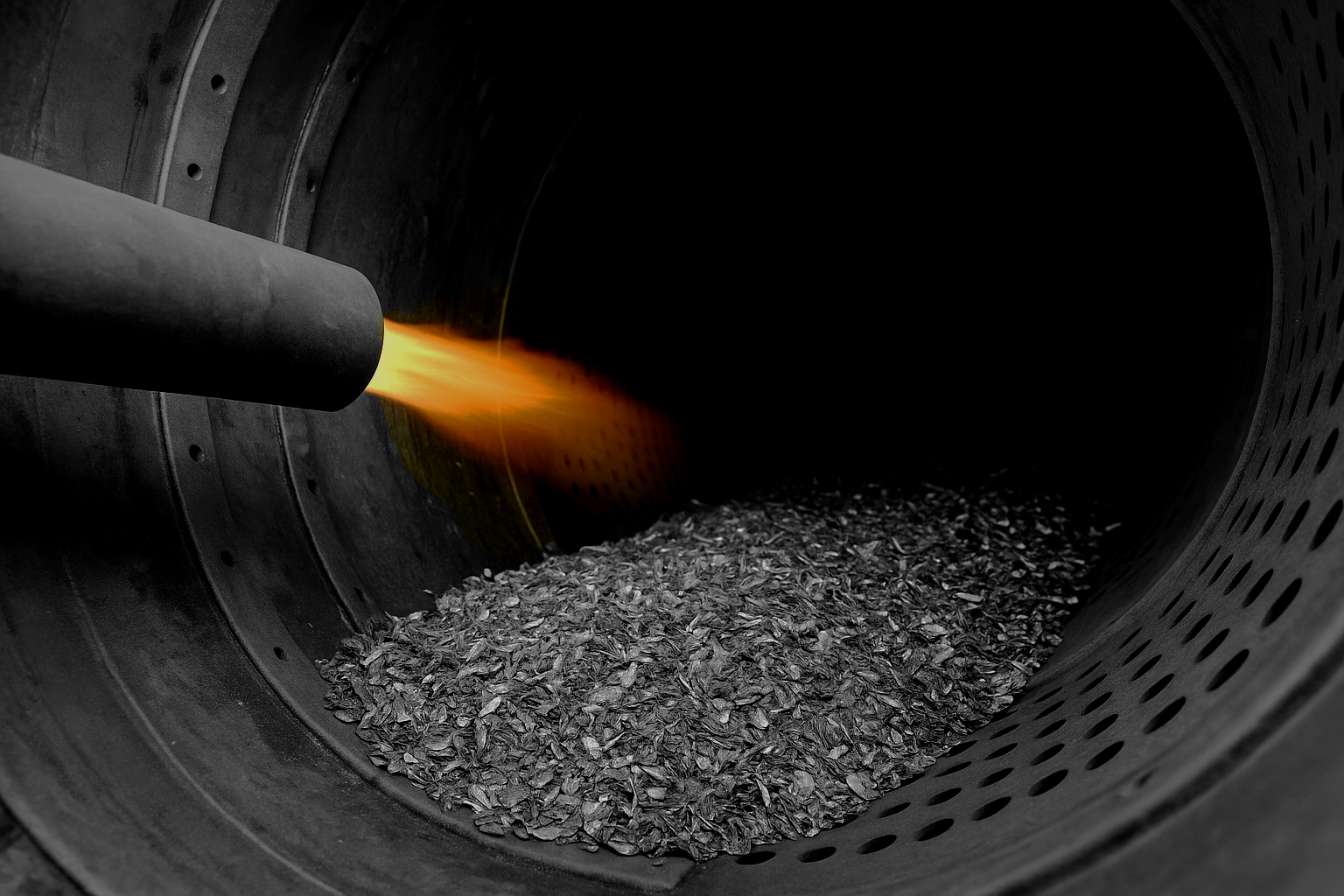
Step 2: Shredding & Decoating
The clean aluminium is shredded into flakes and passed through a rotary decoater — a high-temperature tunnel that
removes paint, coatings, and adhesives. This ensures the metal is ready for reuse without contamination.
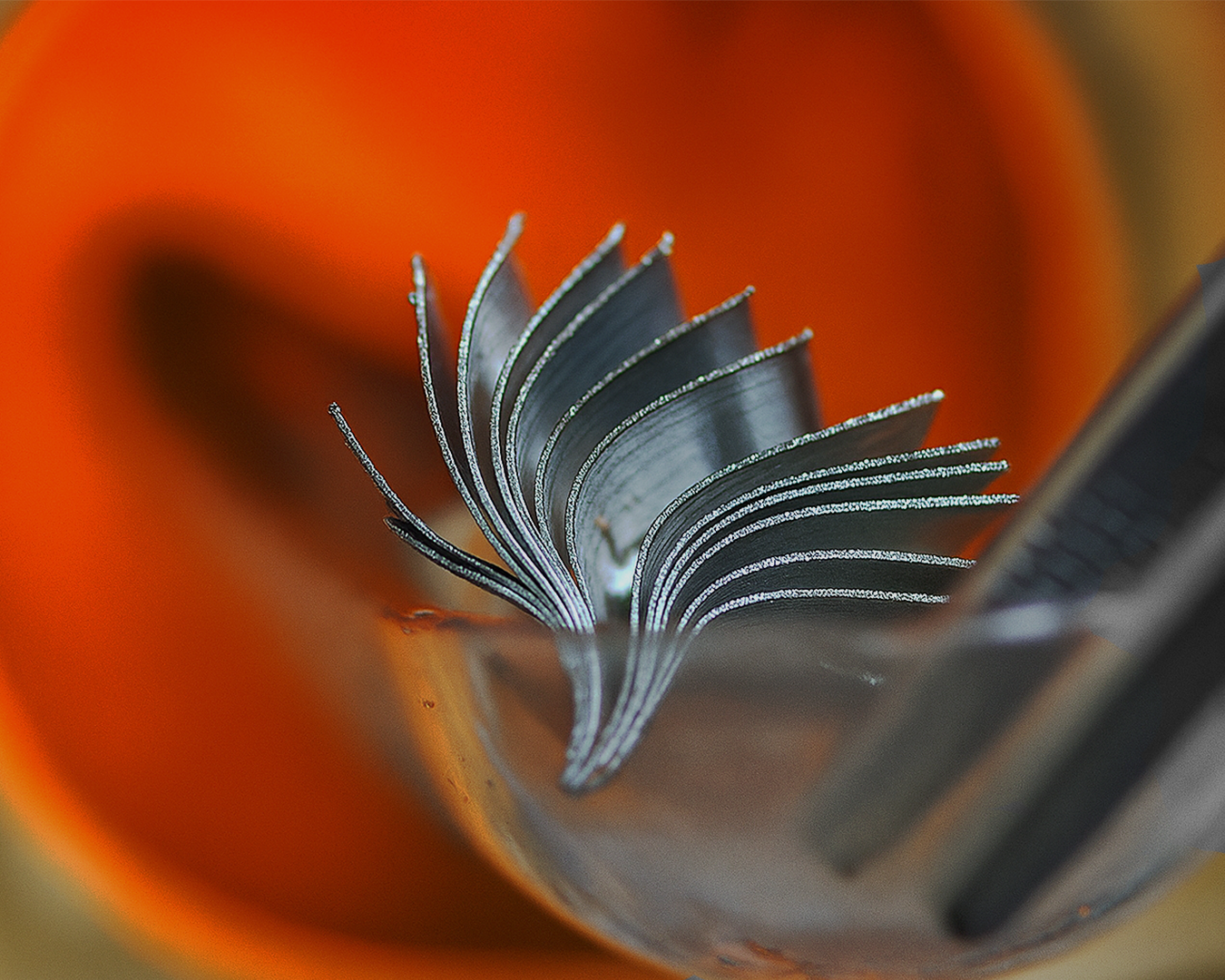
Step 3: Melting & Alloying
The flakes are melted in a furnace at approximately 660°C. At this stage, alloying elements such as
magnesium or silicon are added to give the aluminium specific mechanical properties — strength,
flexibility, or corrosion resistance — depending on its intended use.

Step 4: Casting & Rolling
The molten aluminium is cast into billets or slabs, then hot-rolled into thin coils or sheets. These become the raw form for everything
from car parts to architectural panels — like the ones we work with at NOWN.
Recycling aluminium consumes approximately 5% of the energy required to produce primary aluminium from bauxite ore. It also reduces carbon emissions dramatically and recovers nearly 100% of the metal.
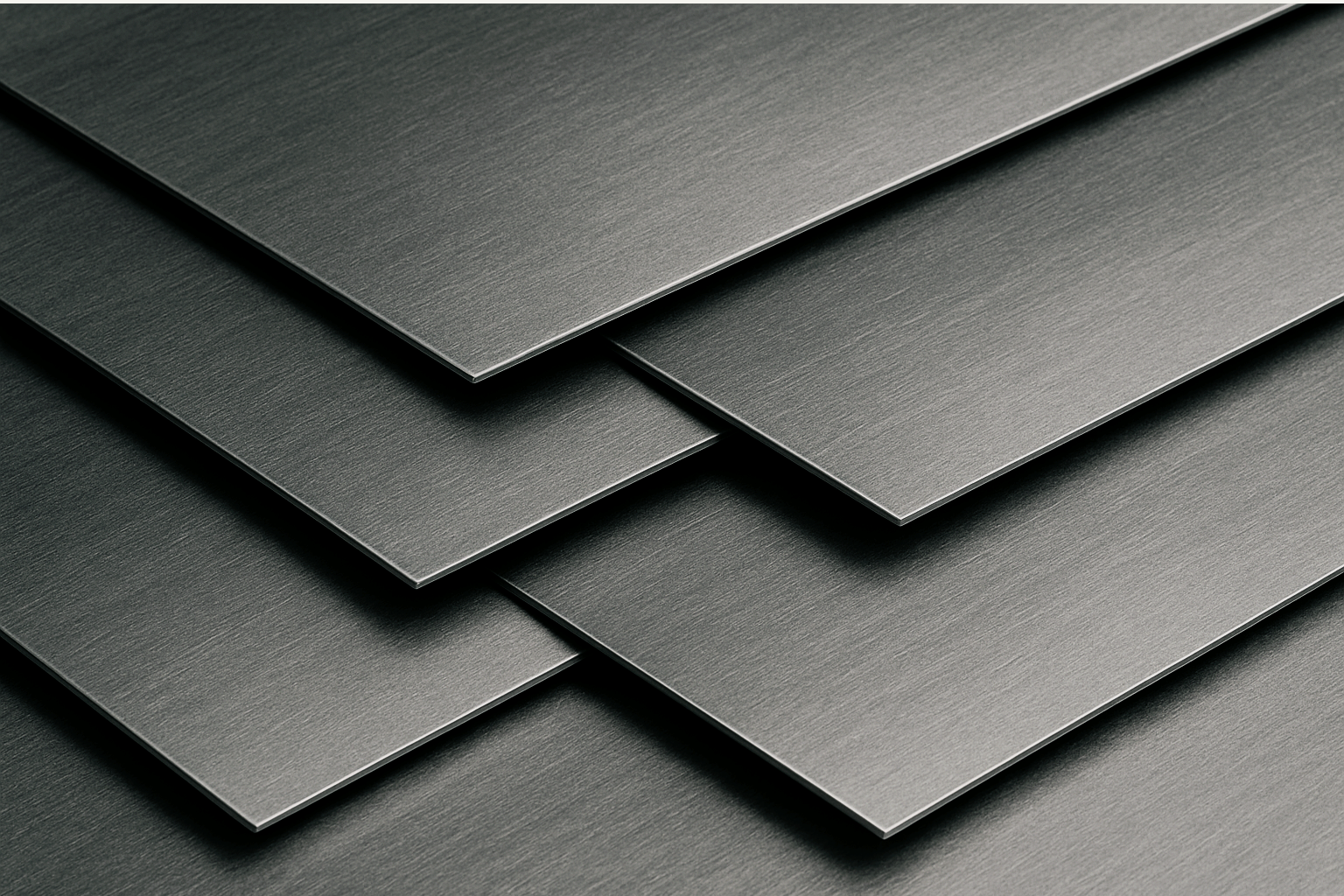
CircuLUM™
NOWN transforms these coils into CircuLUM™ — a high-performance, ceiling-ready material made from
75% post-consumer aluminium.
- VOC-free coatings.
- Adhesive-free, modular assembly.
- Red List Free + Declare certified.
- Designed for full recovery.
Vapor®

CircuLUM™ takes shape as Vapor®, NOWN’s modular acoustic ceiling system. Each module repurposes the equivalent of
~136 used aluminium cans — now sculpting space and shaping light in high-performance spaces.
Return-Ready Design
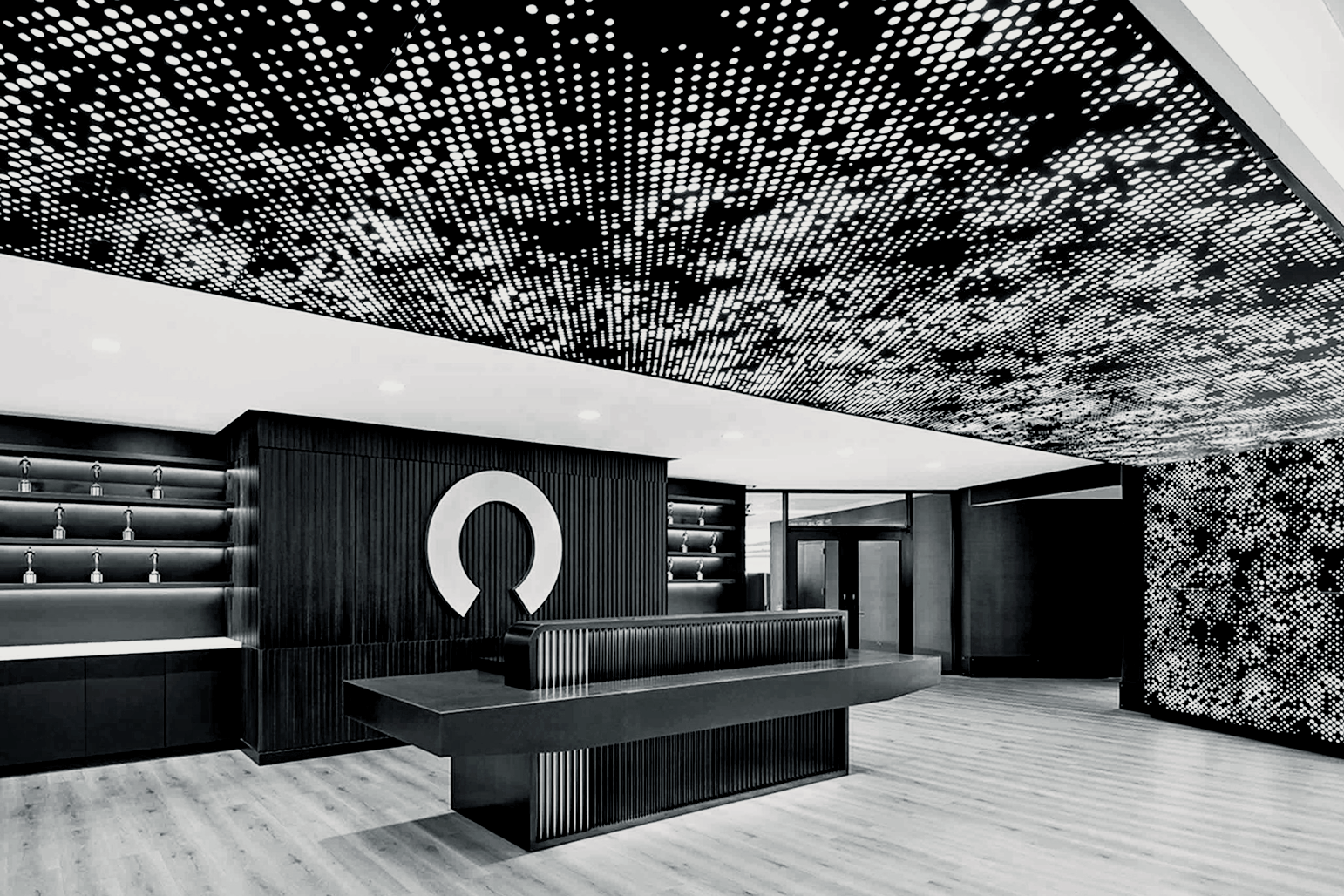
When the space changes, Vapor® is ready.
No glues. Easy to disassemble.
No toxins. Safe to handle.
No damage. Ready to be recycled.
Explore more of our CircuLUM™ systems.
